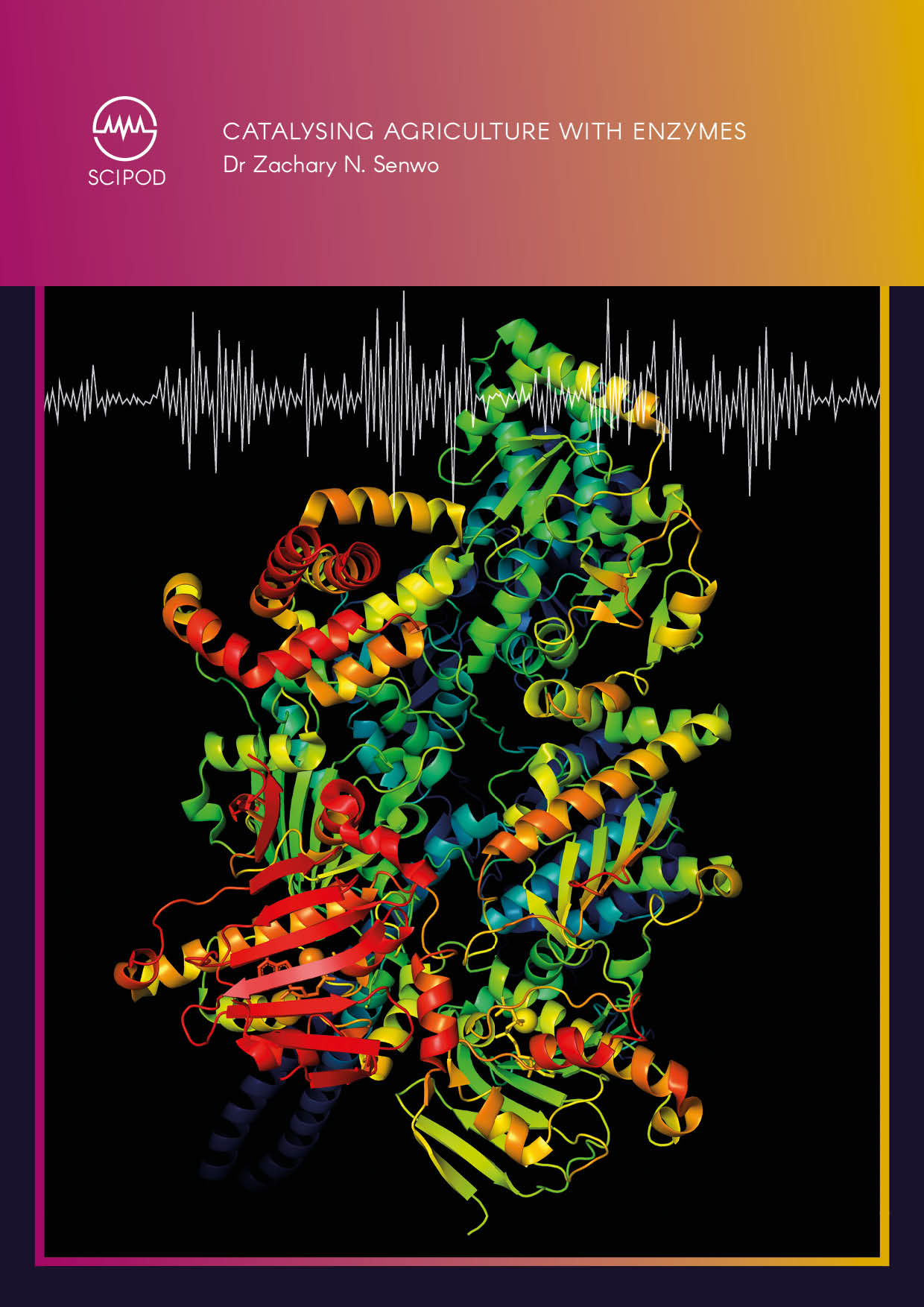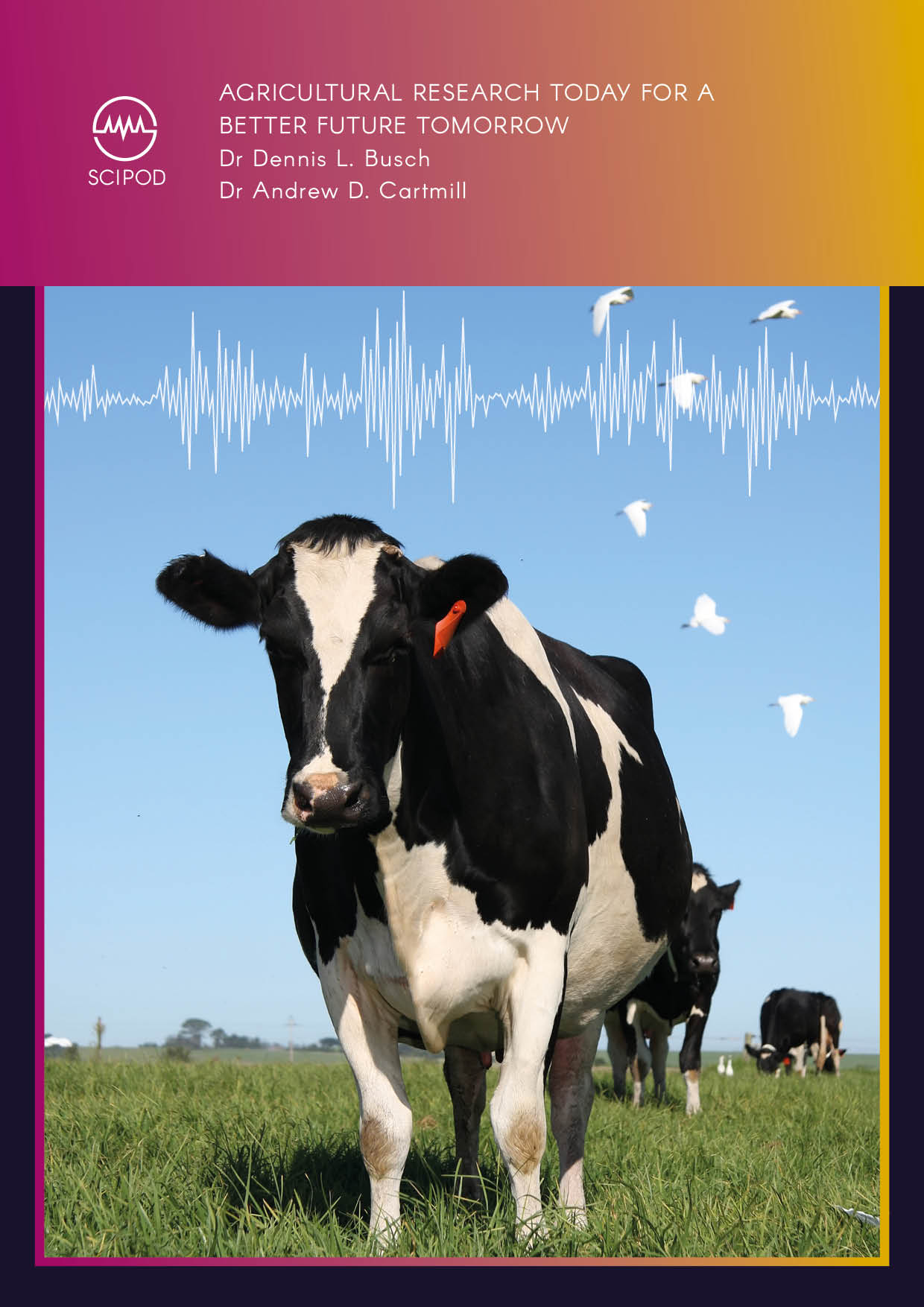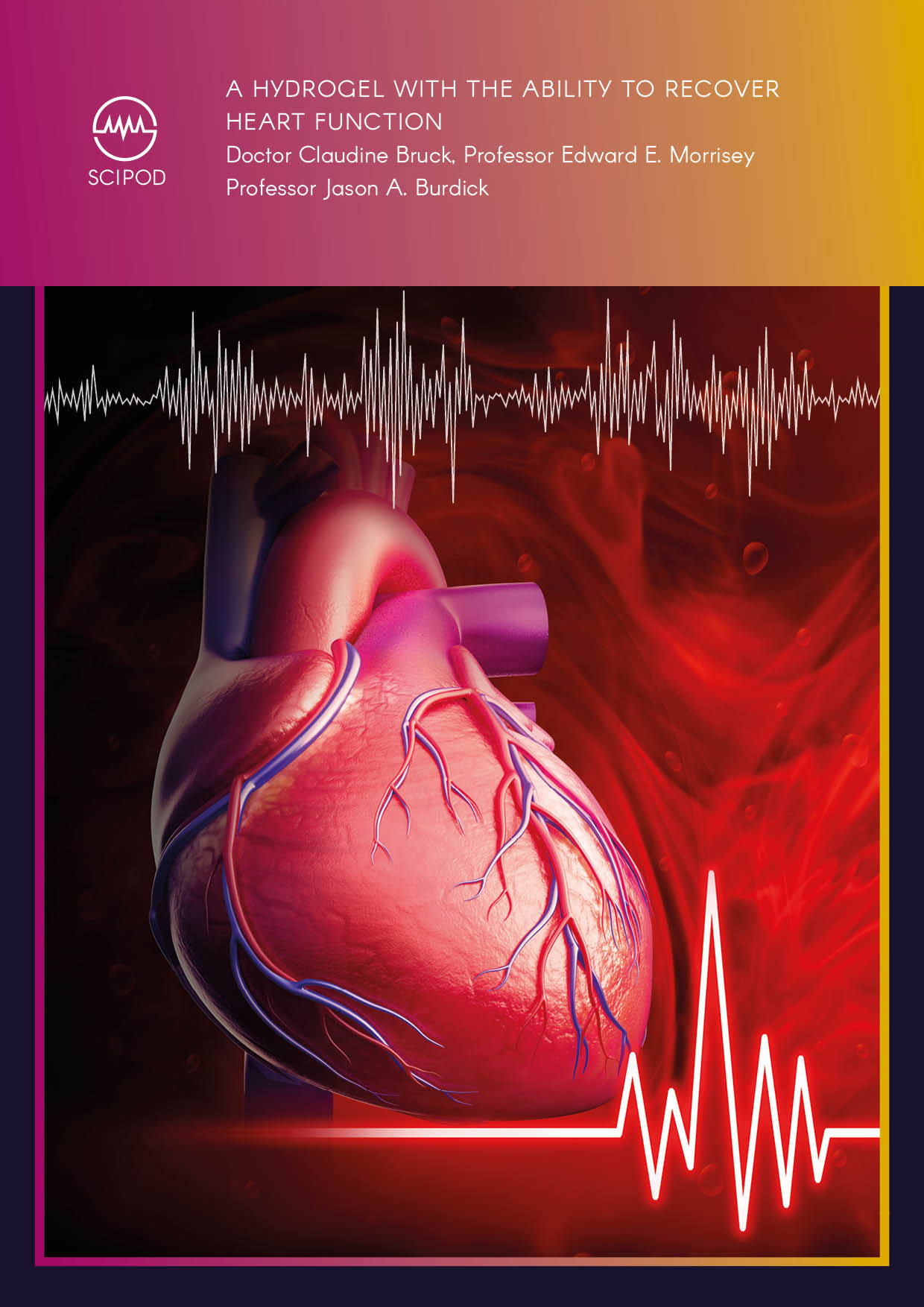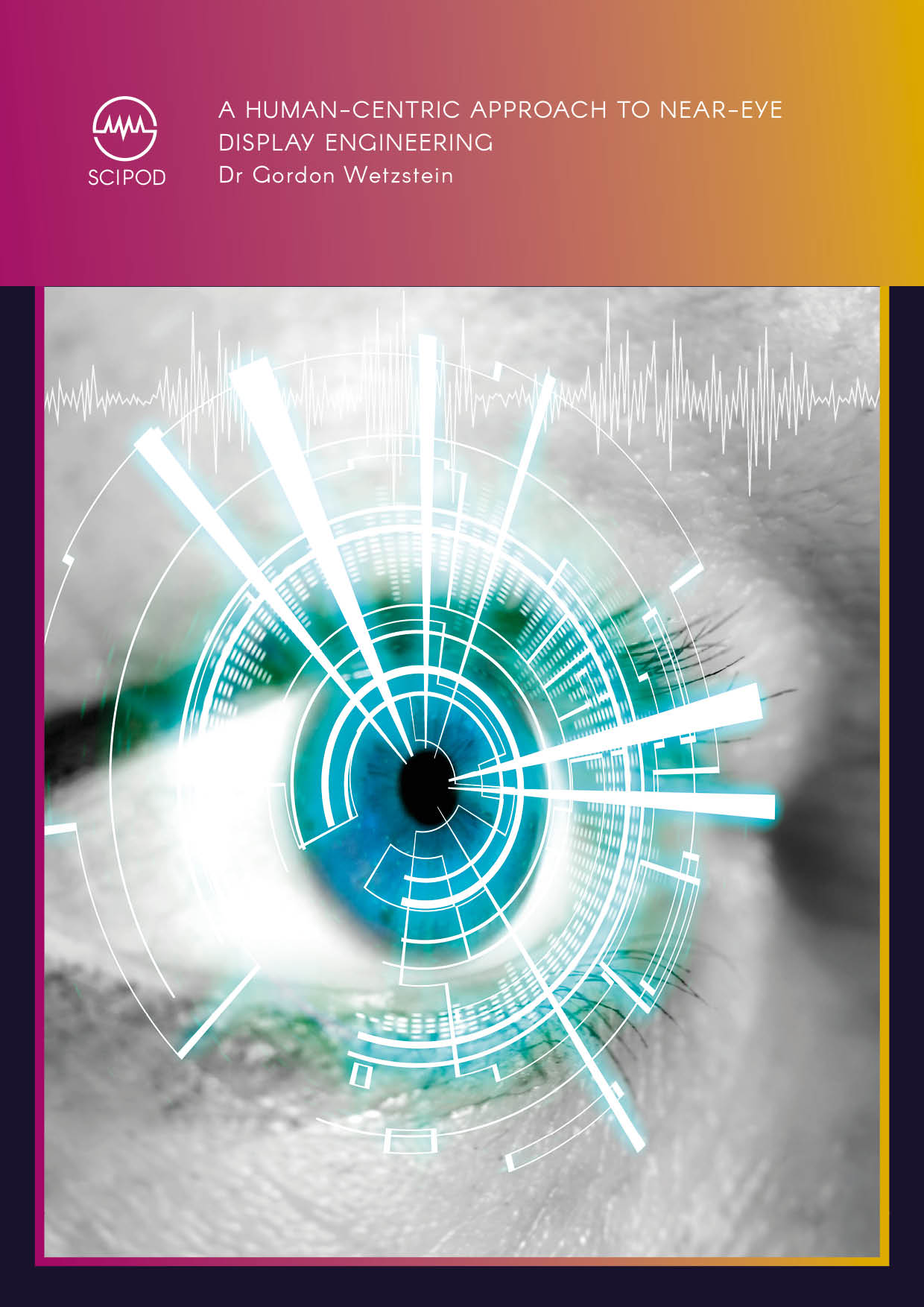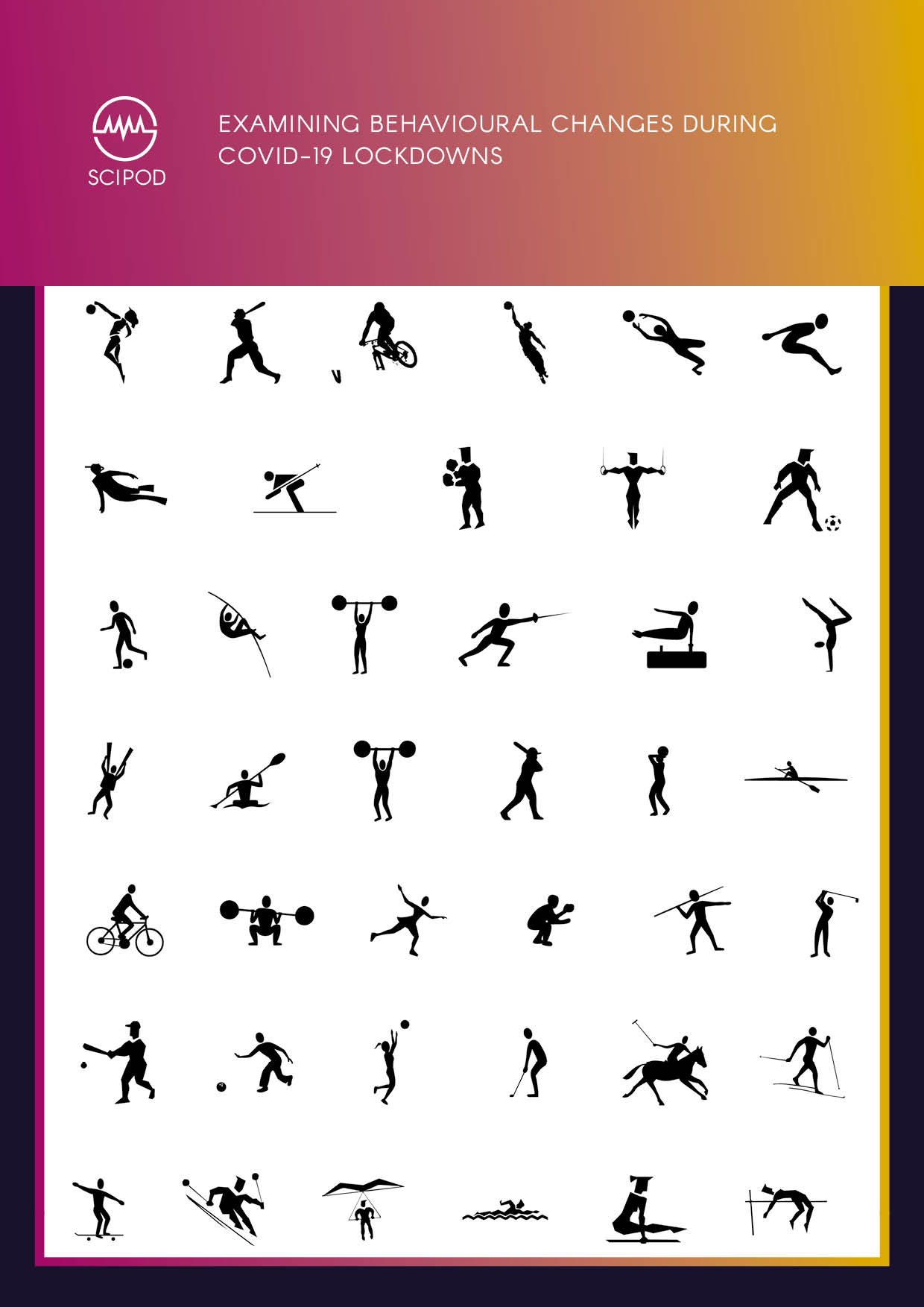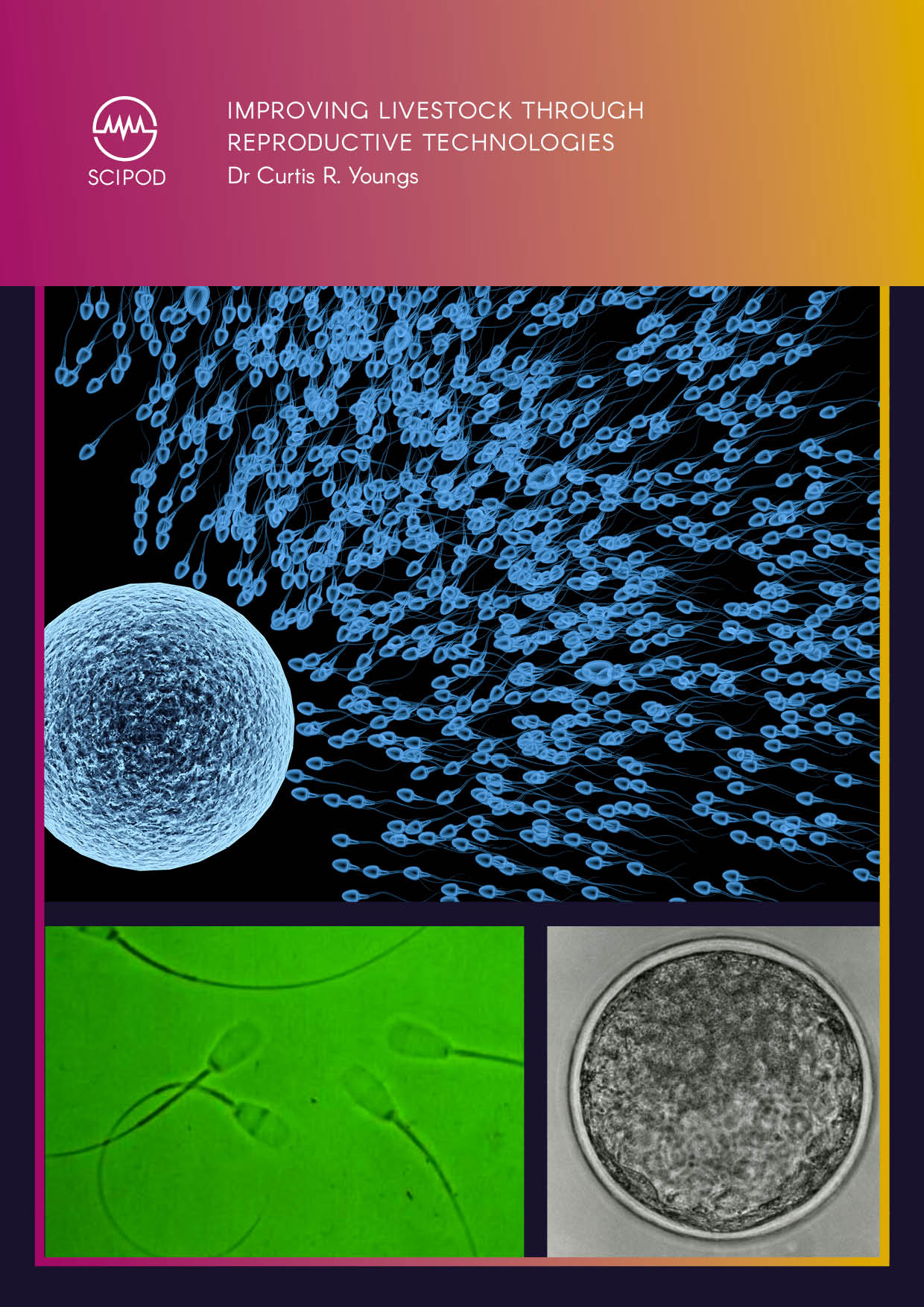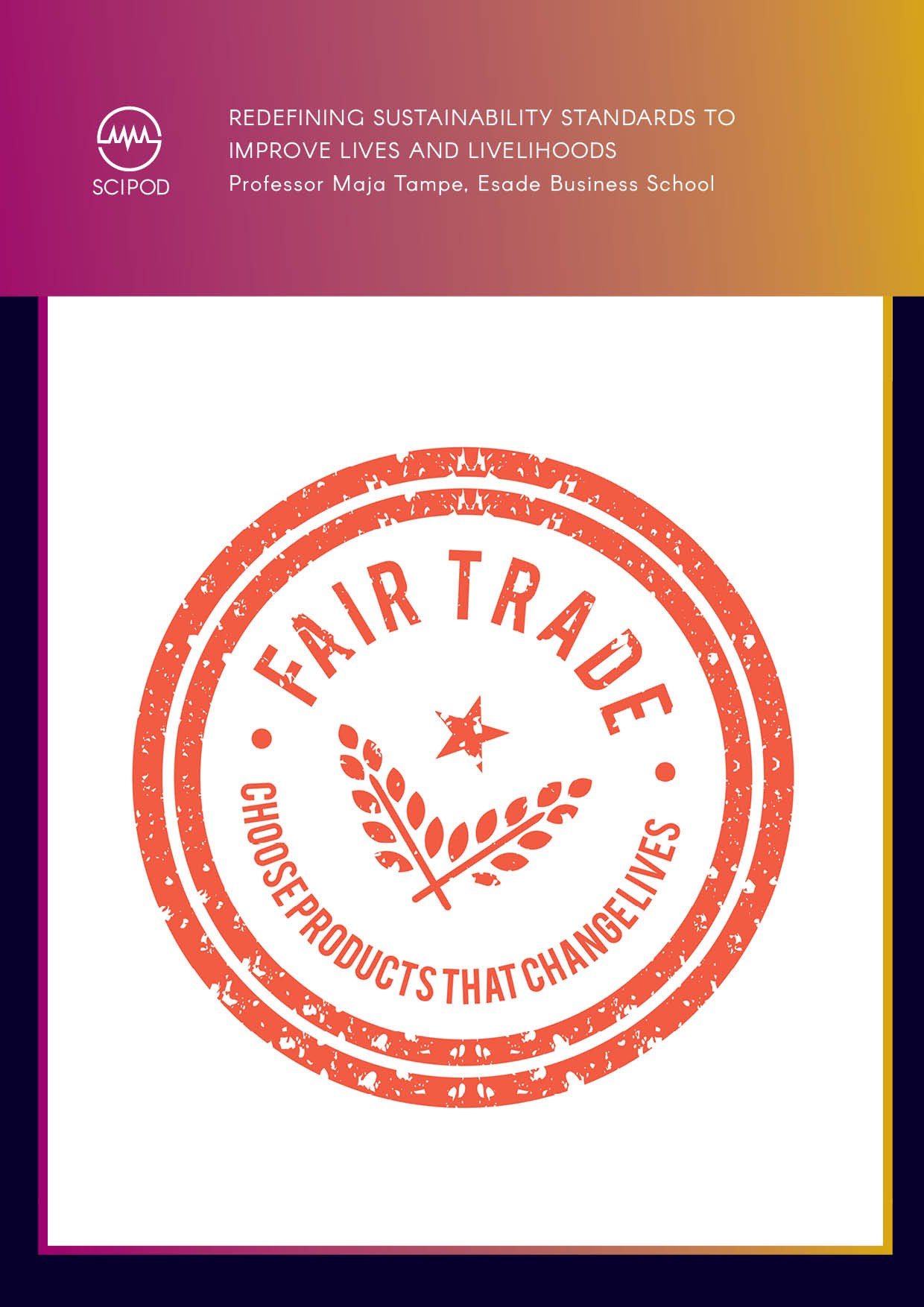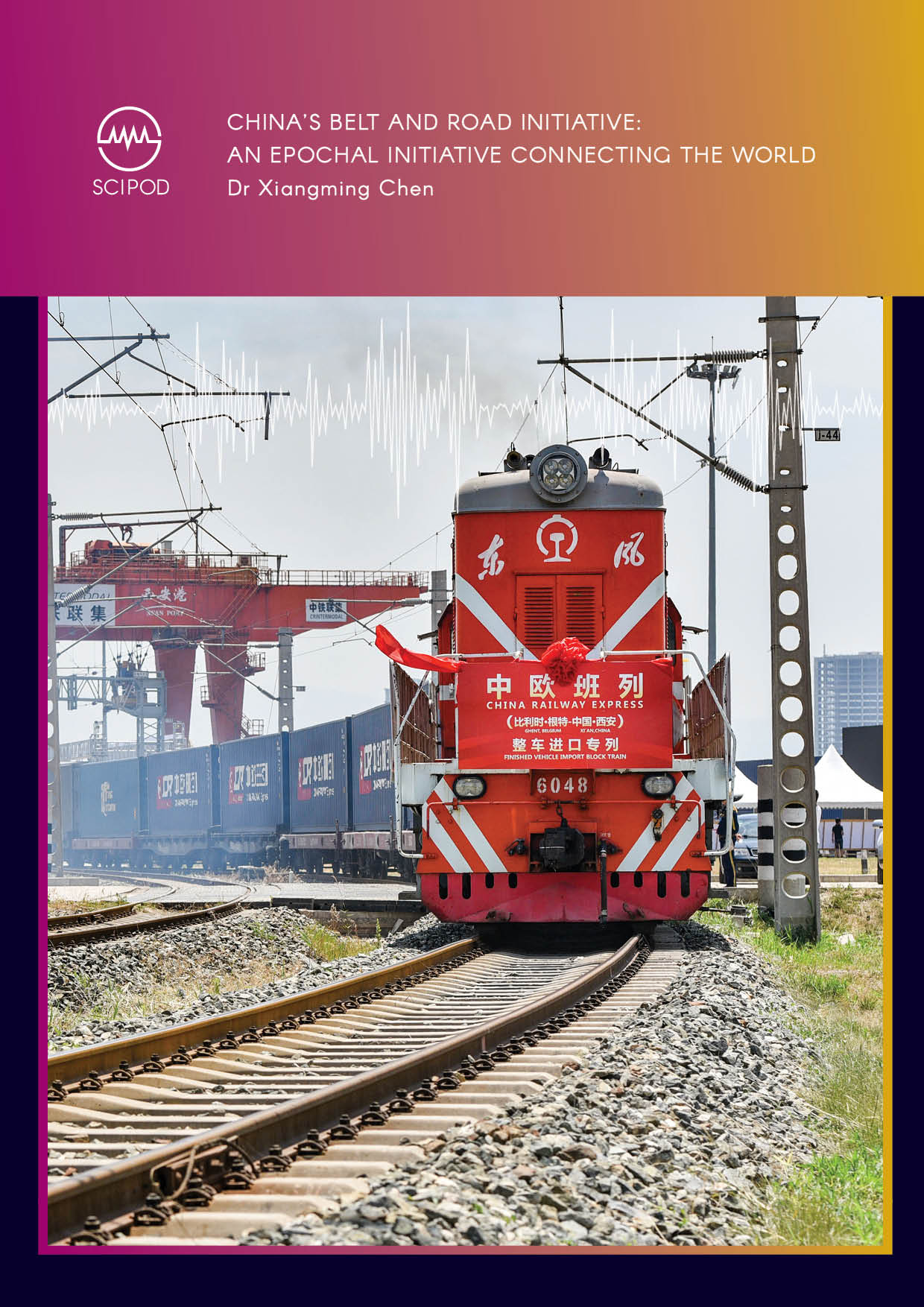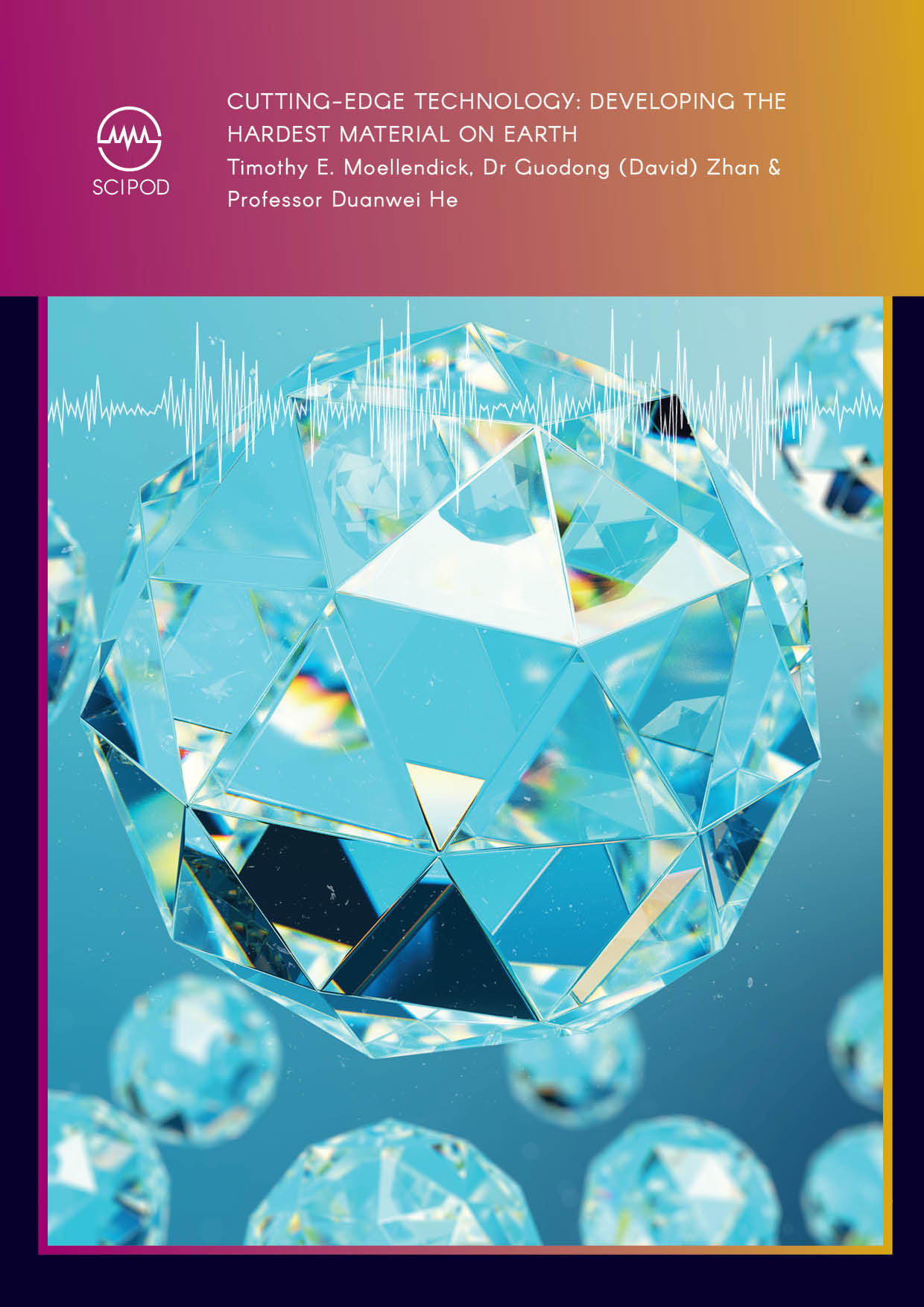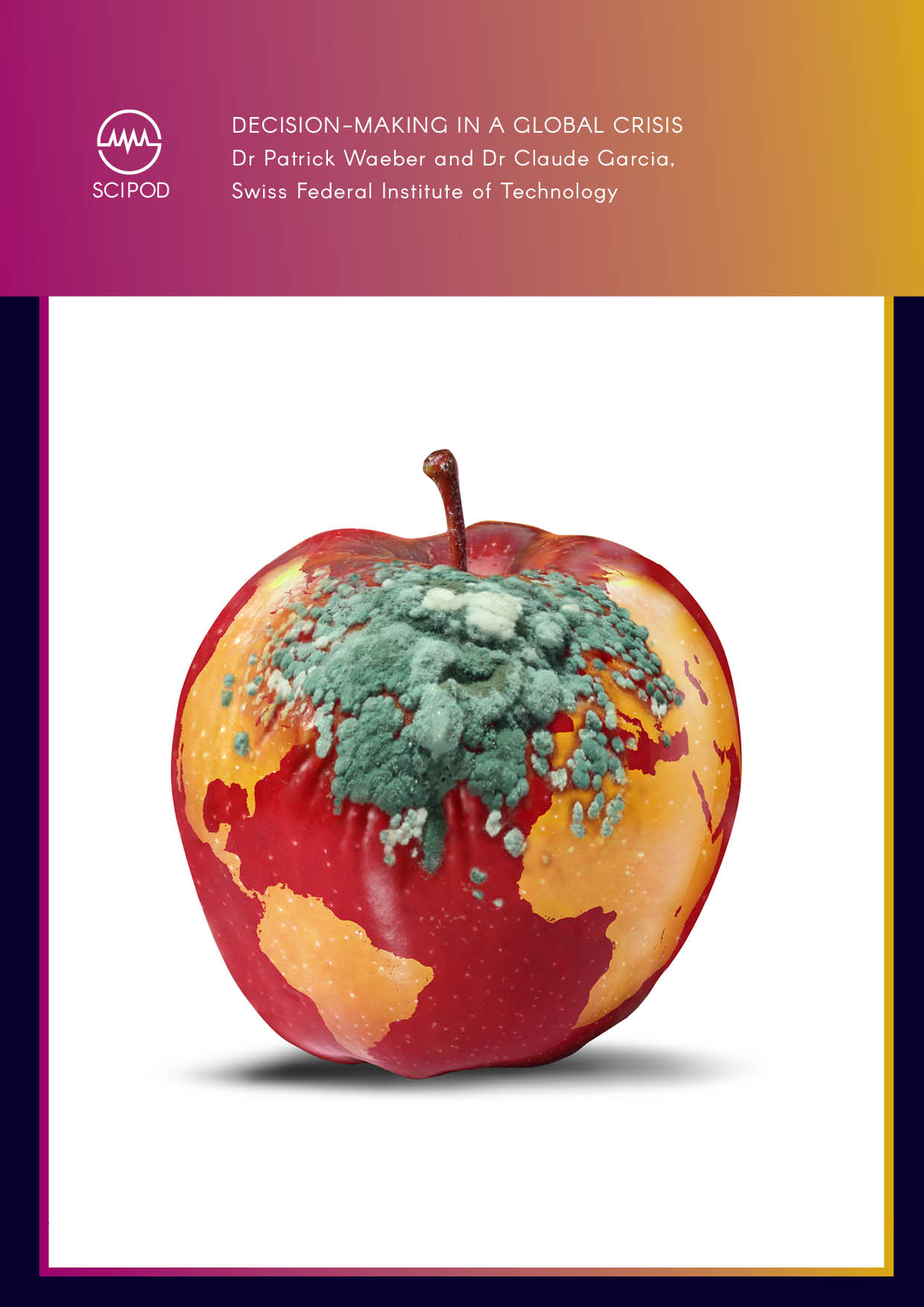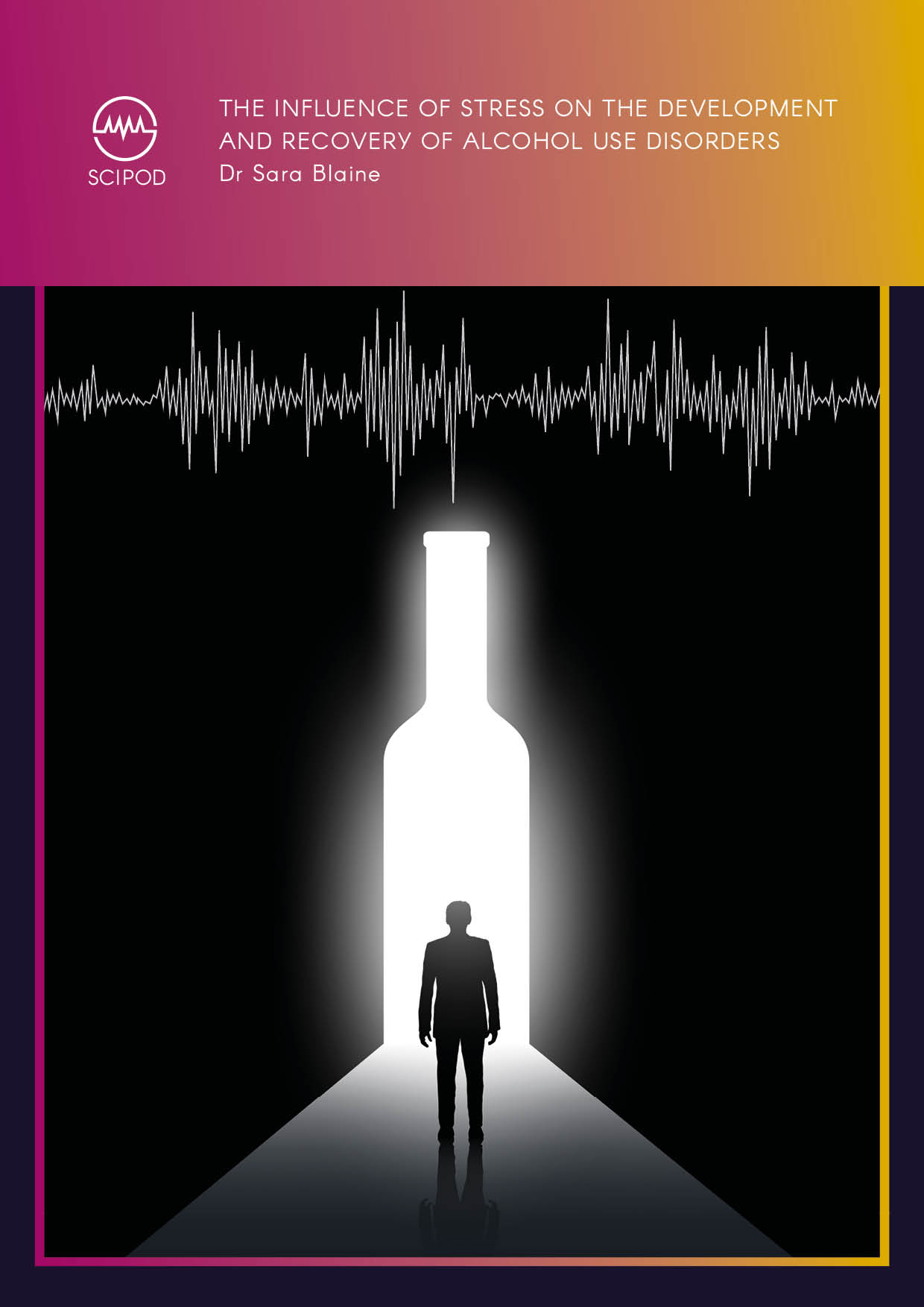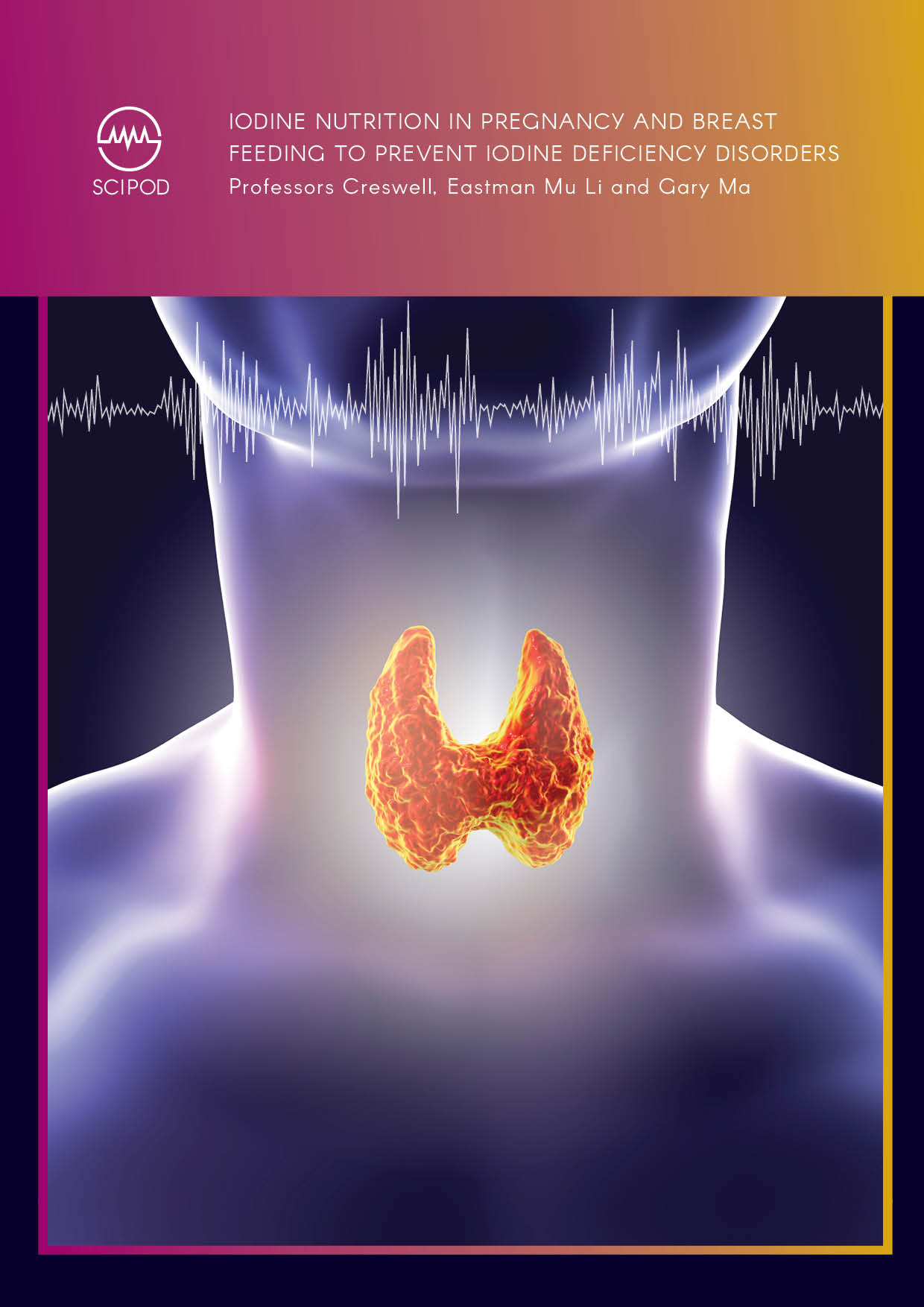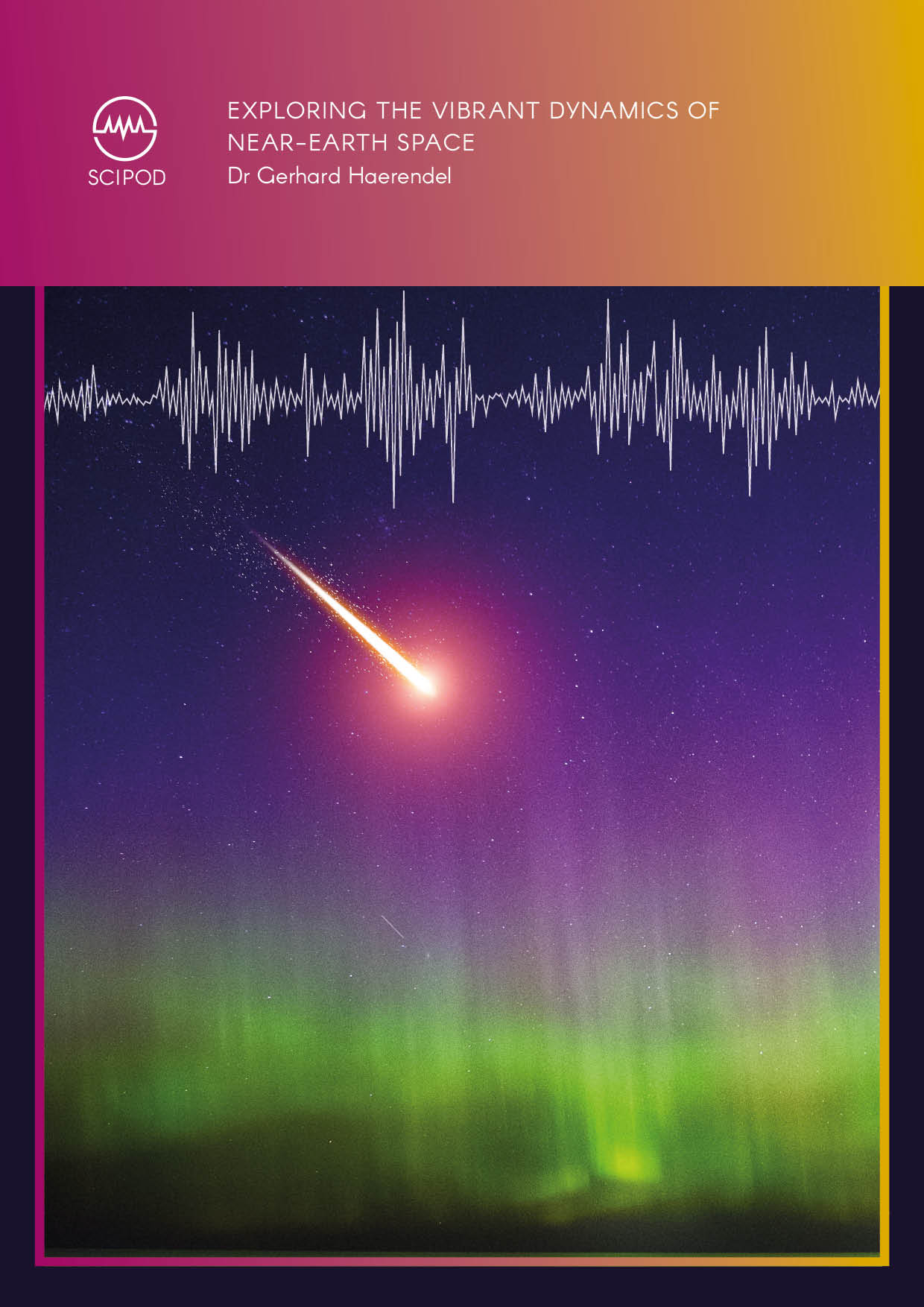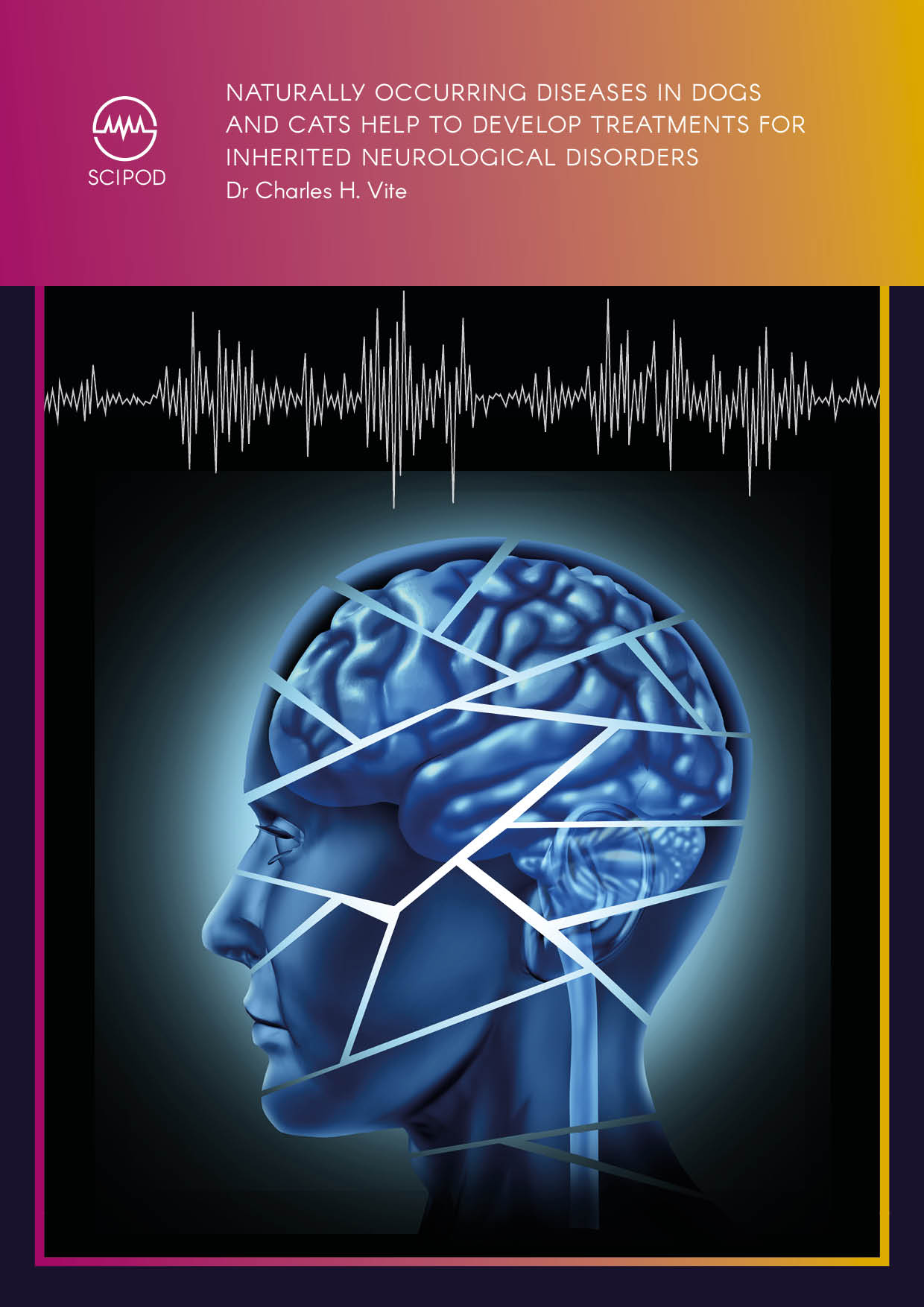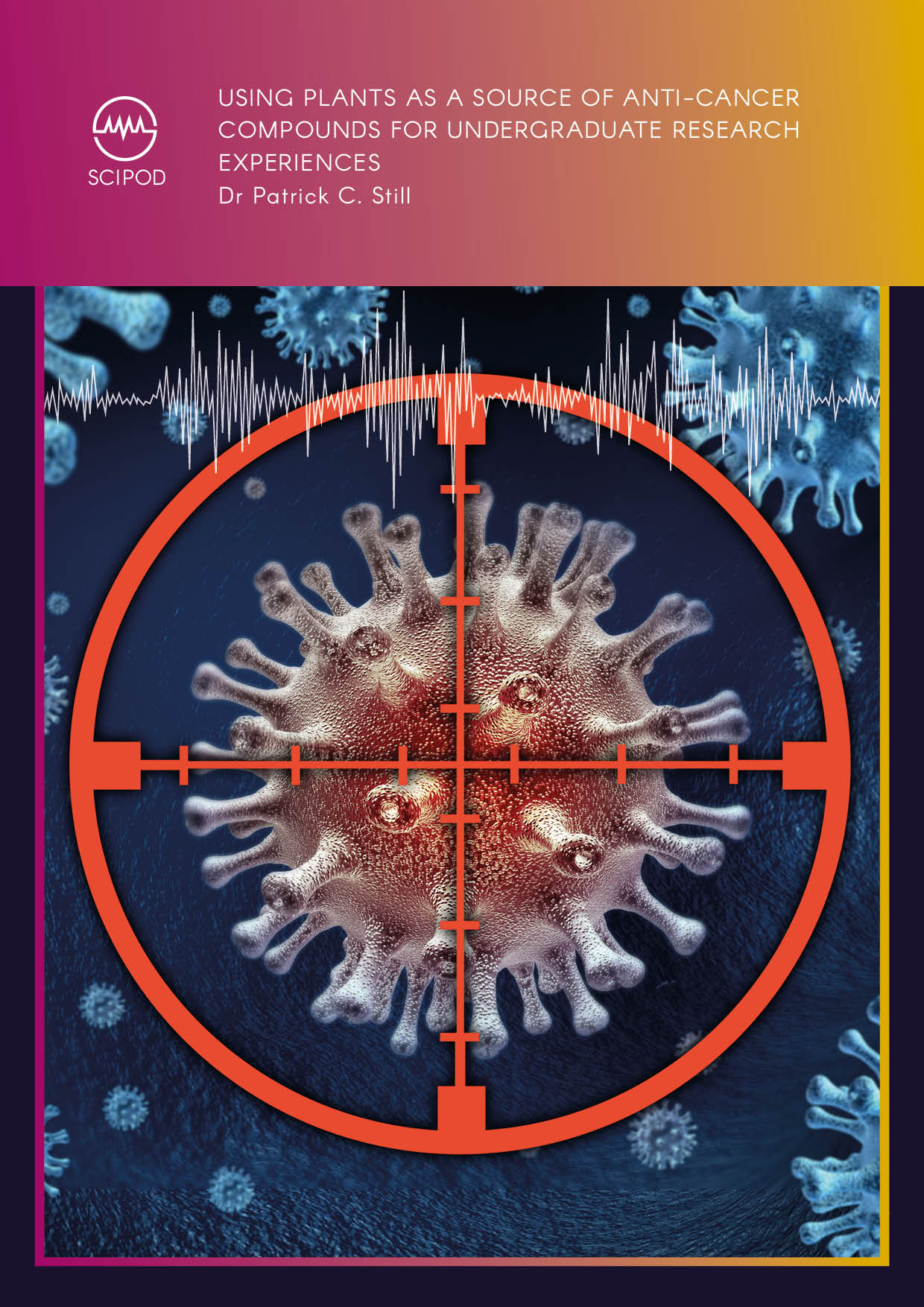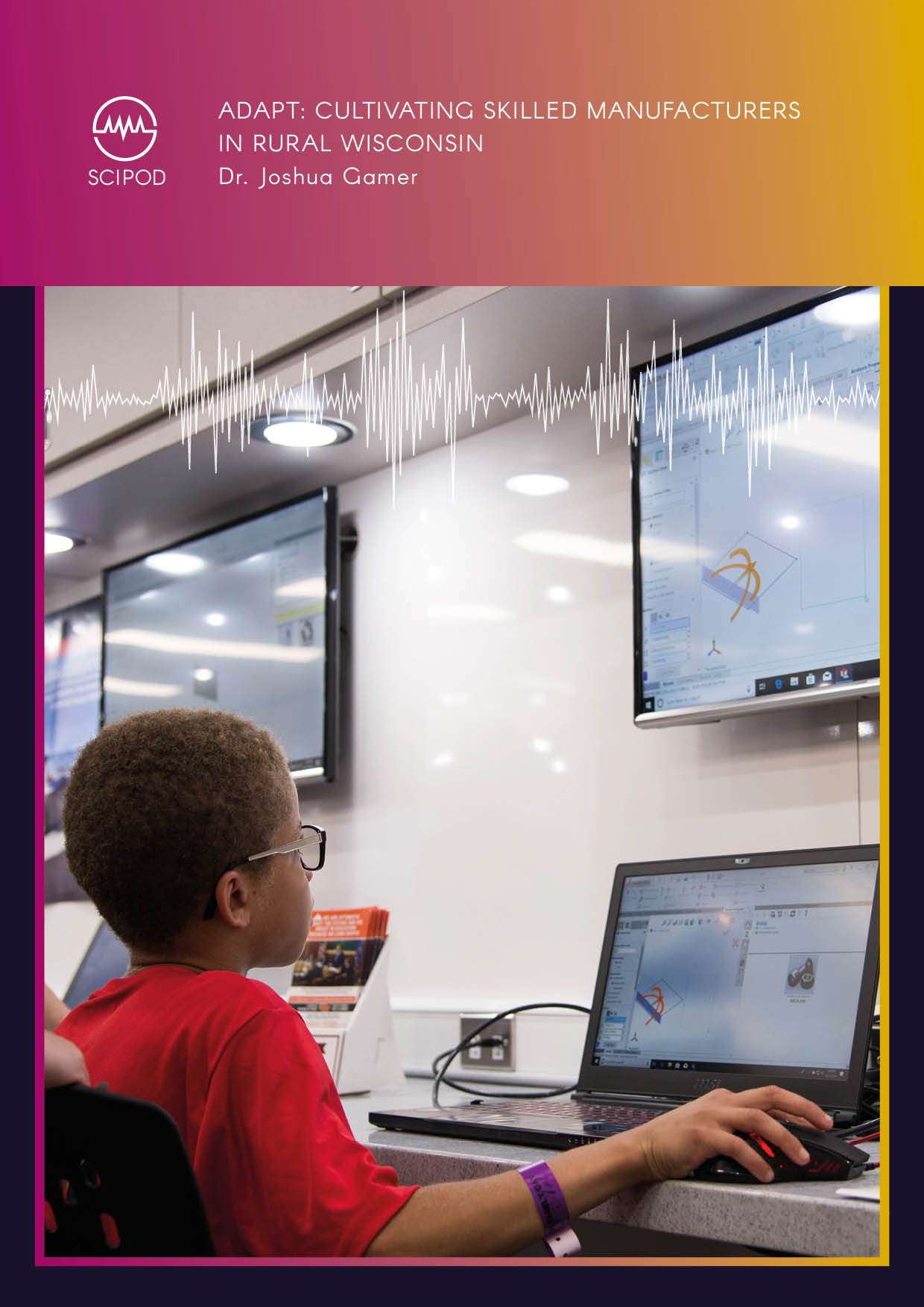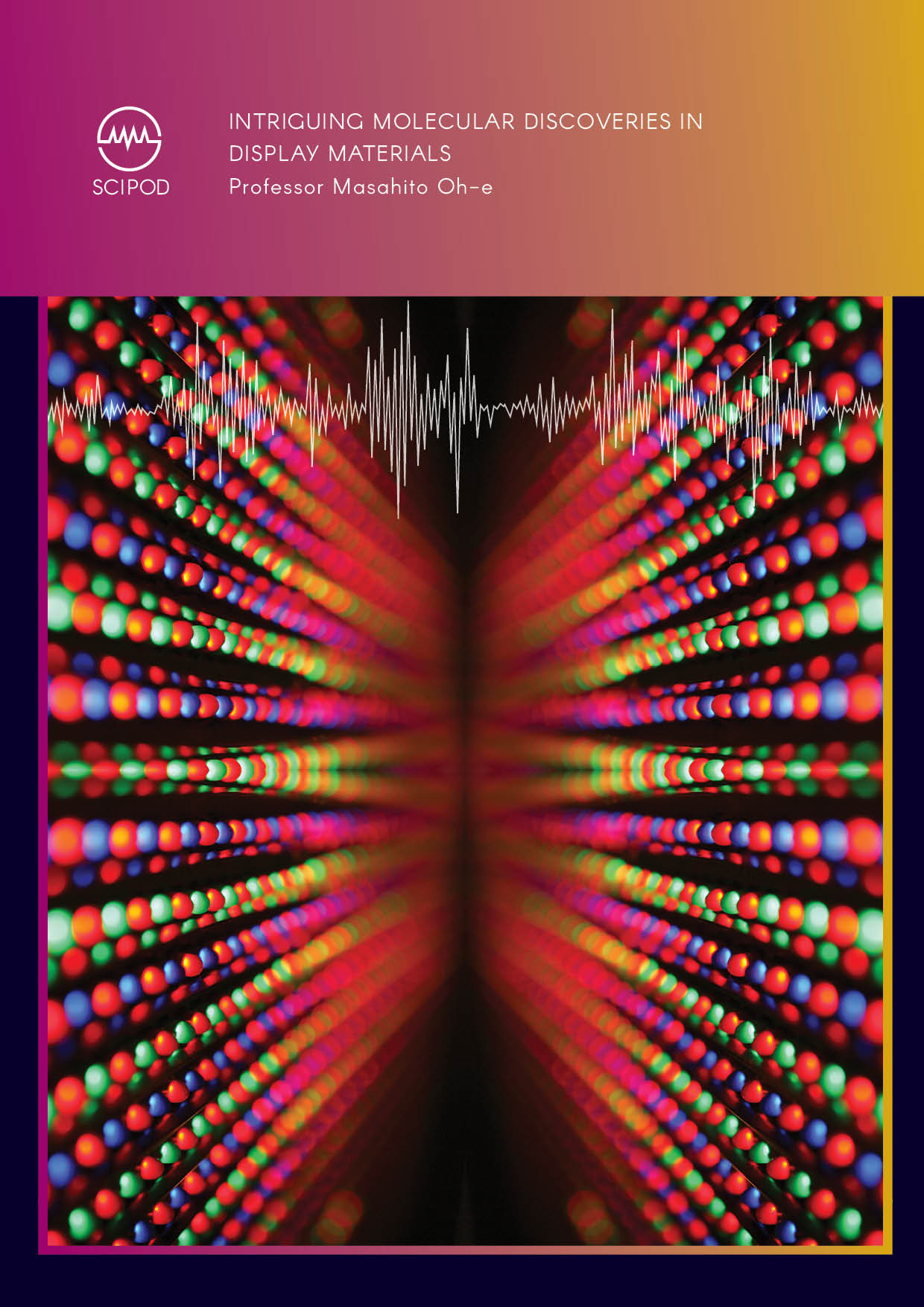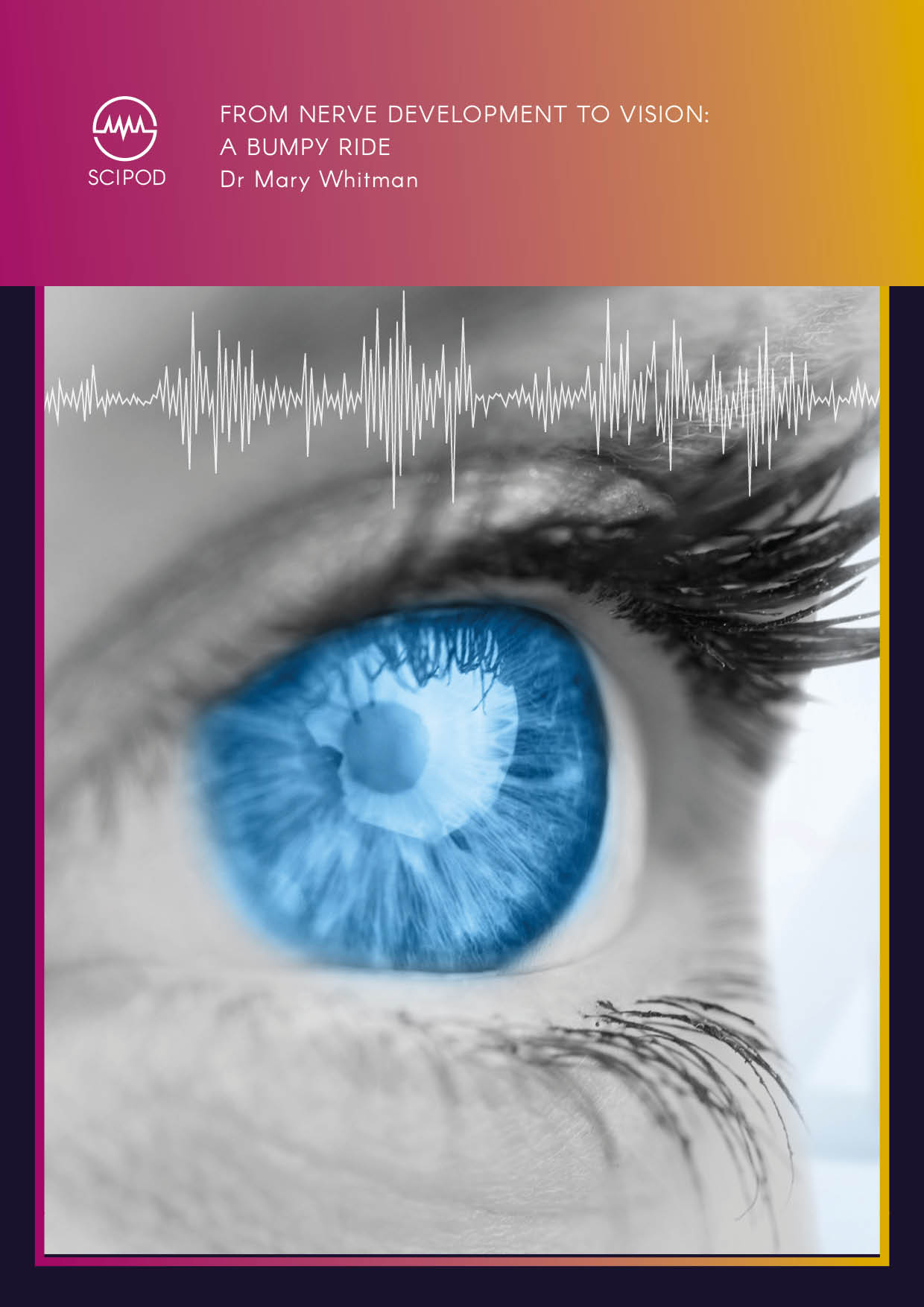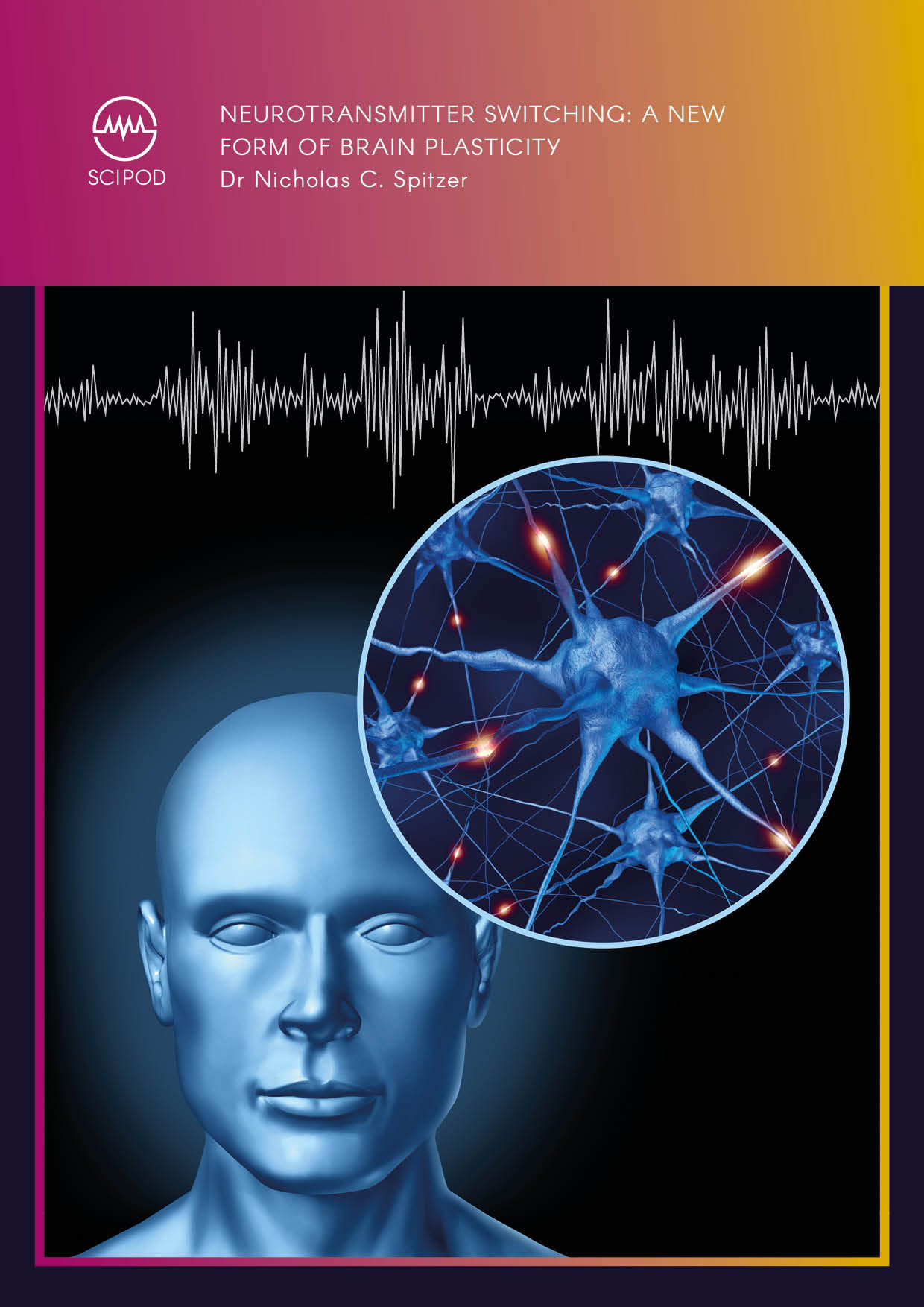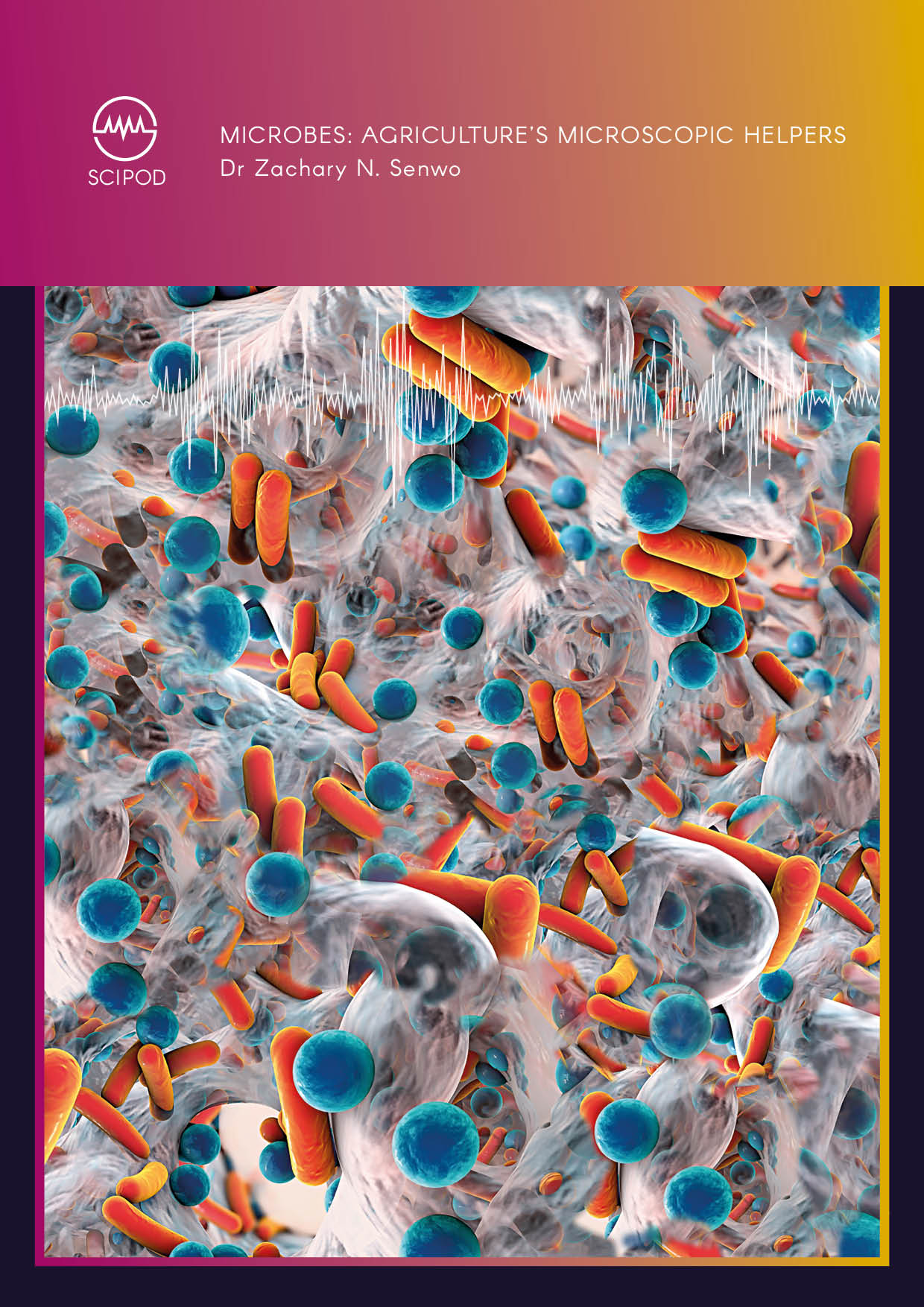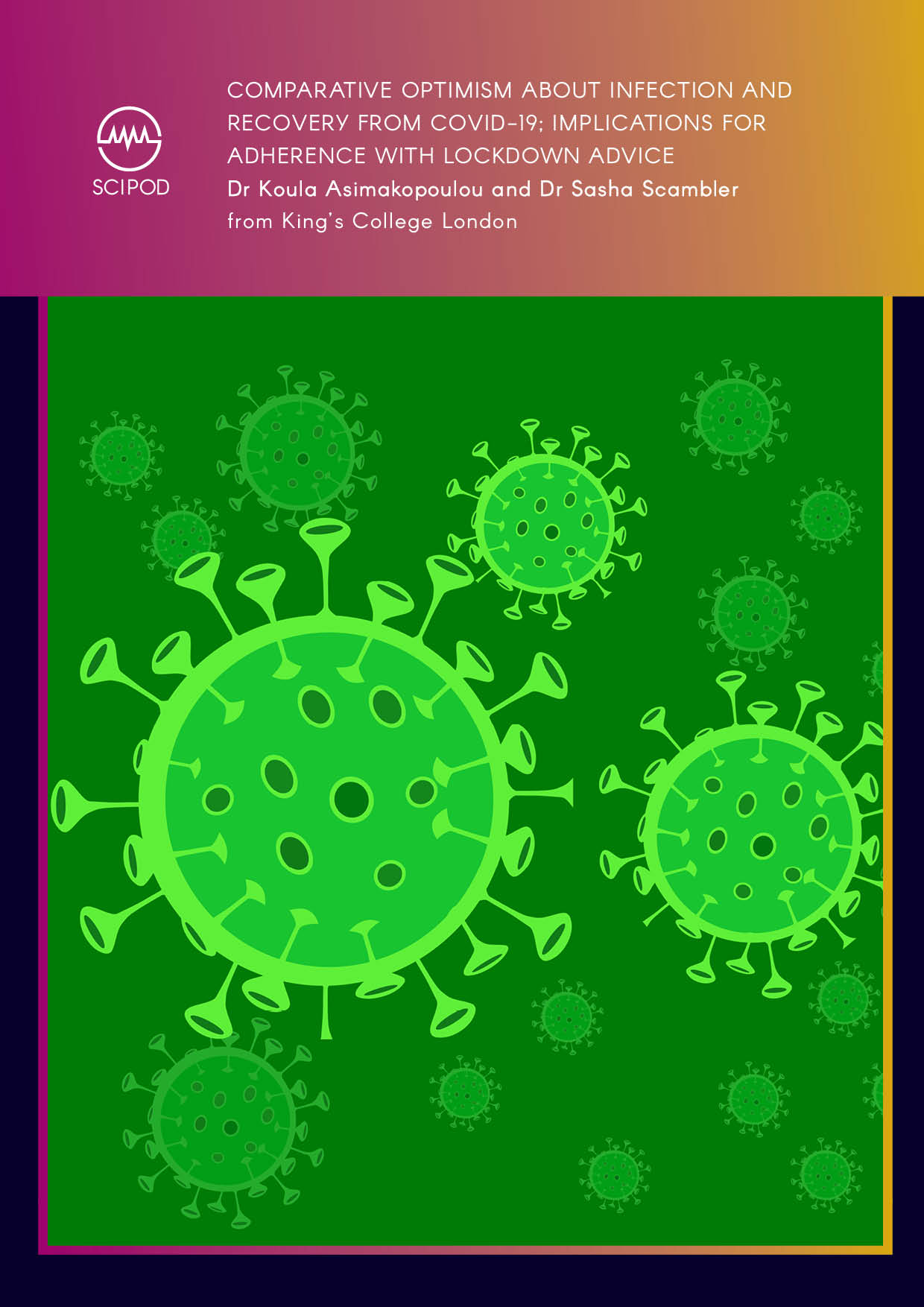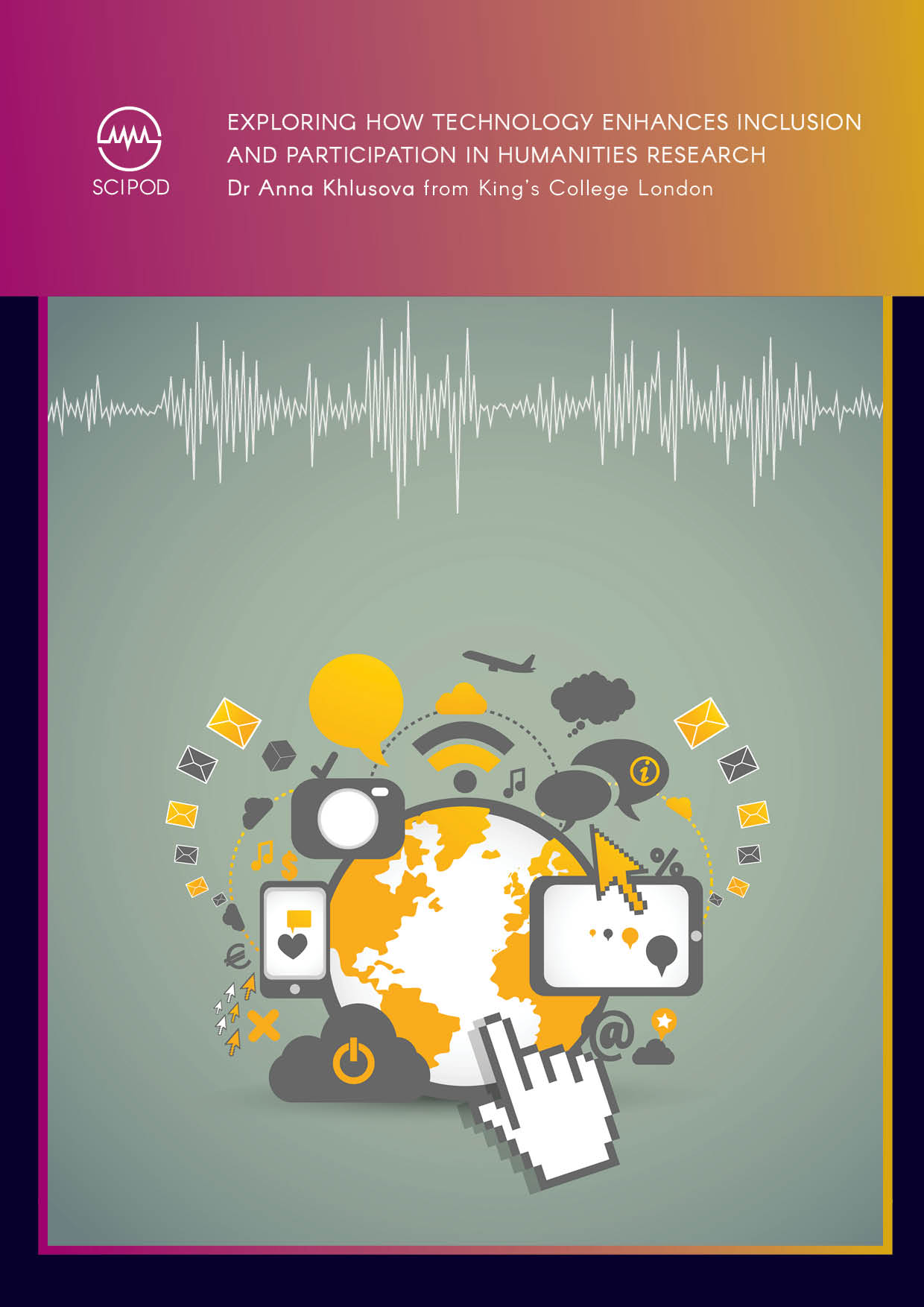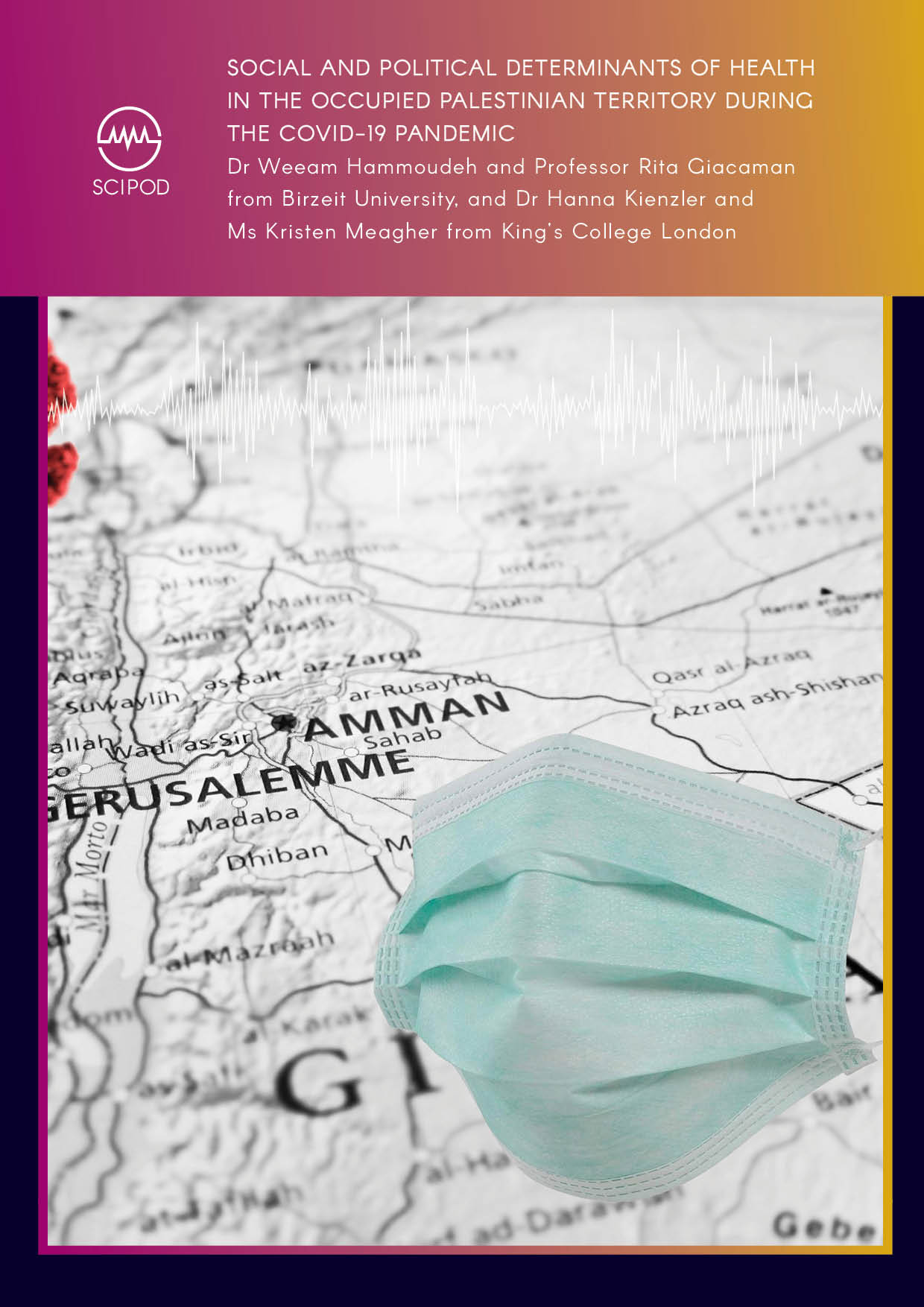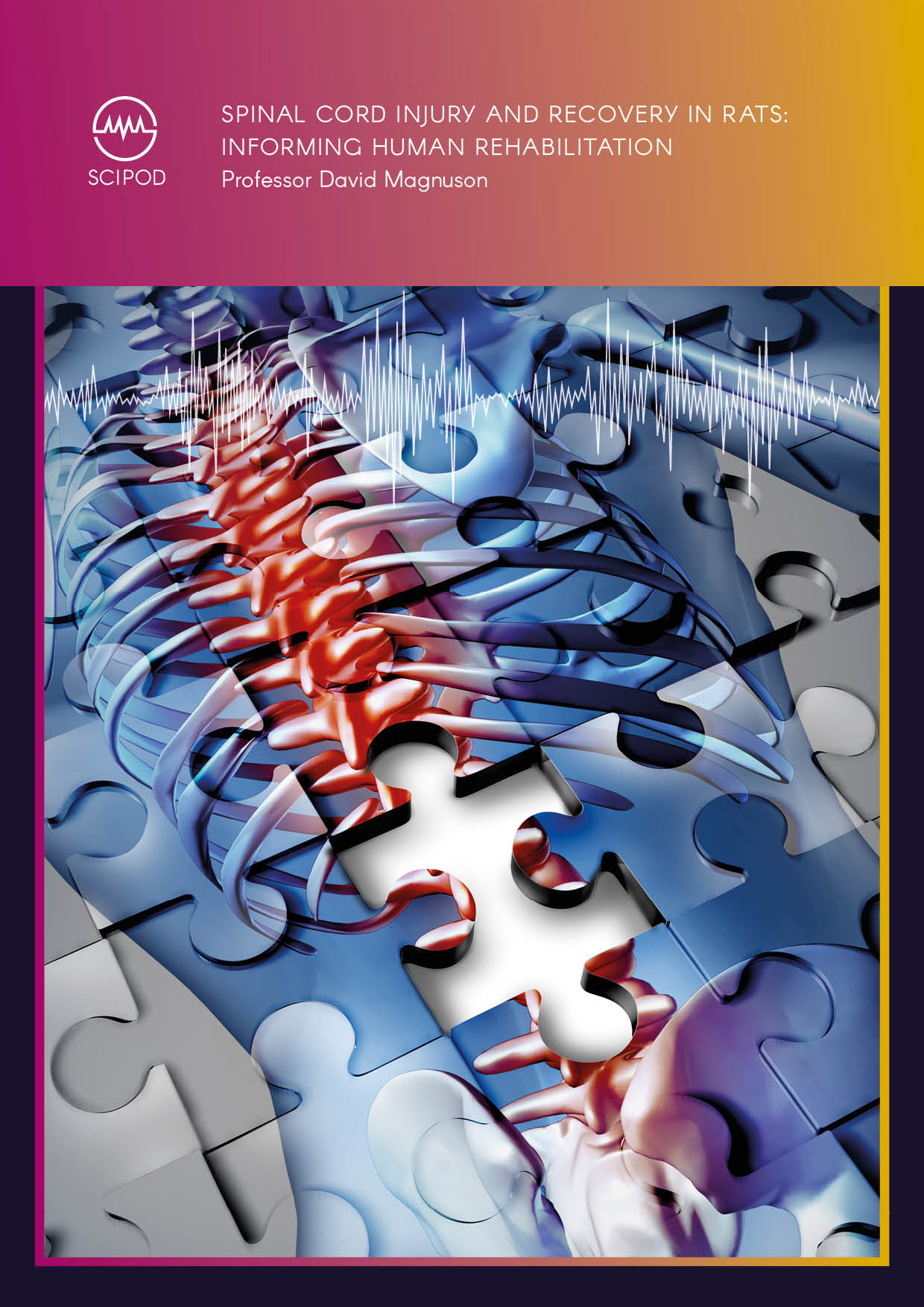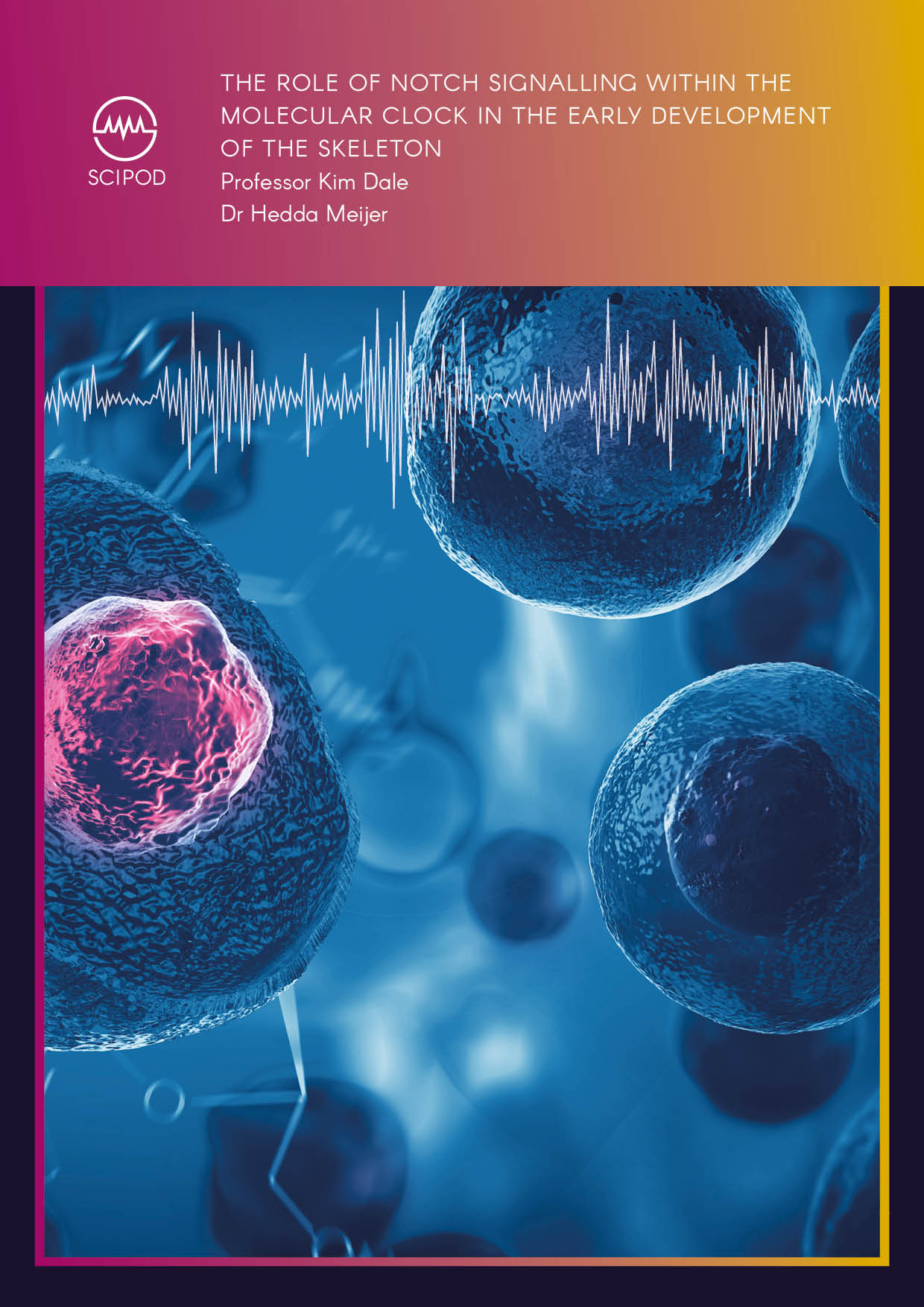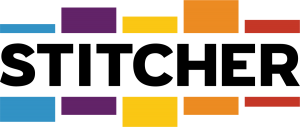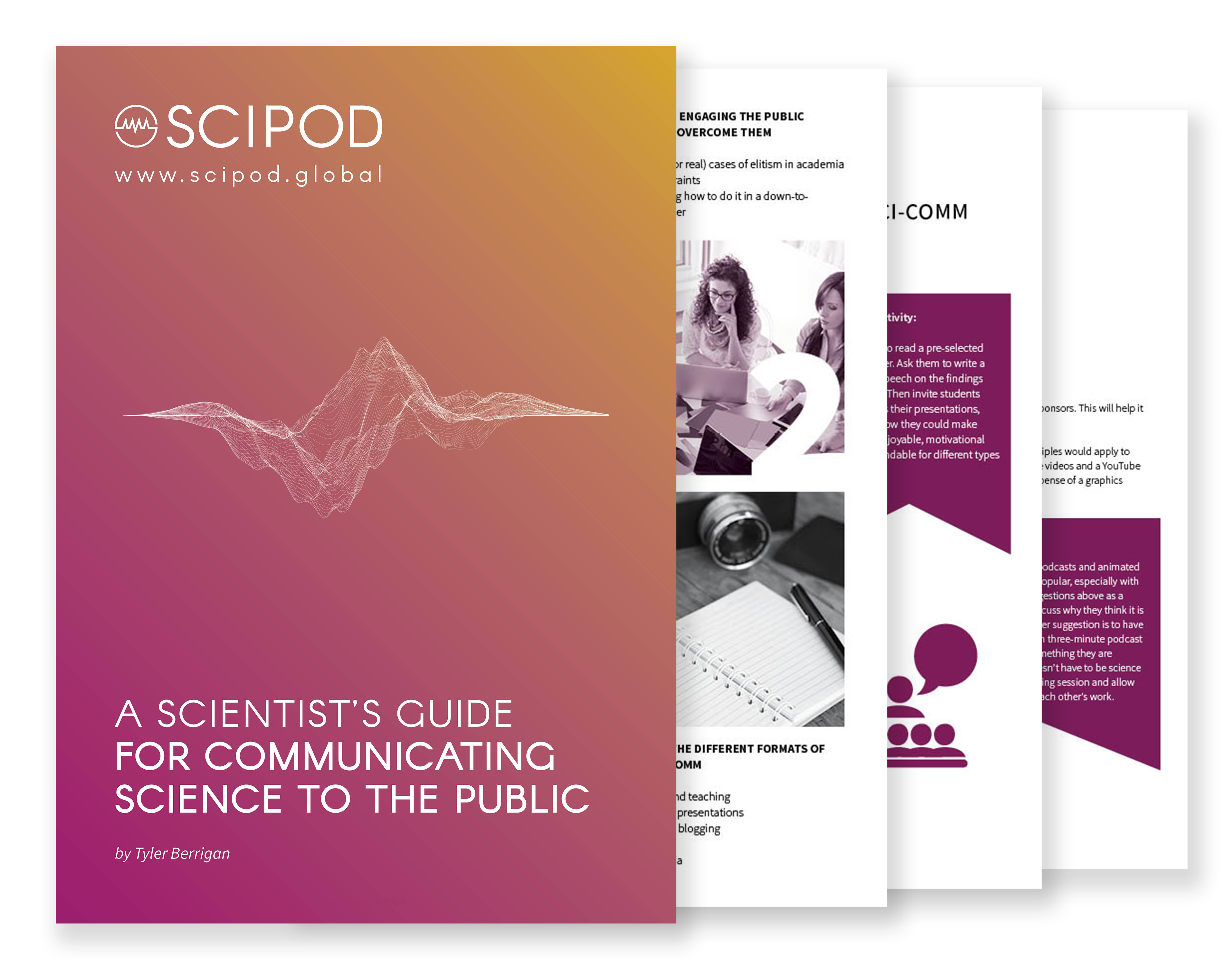Welcome to SciComm Radio
An exclusive interview series with leading scientists and science communicators
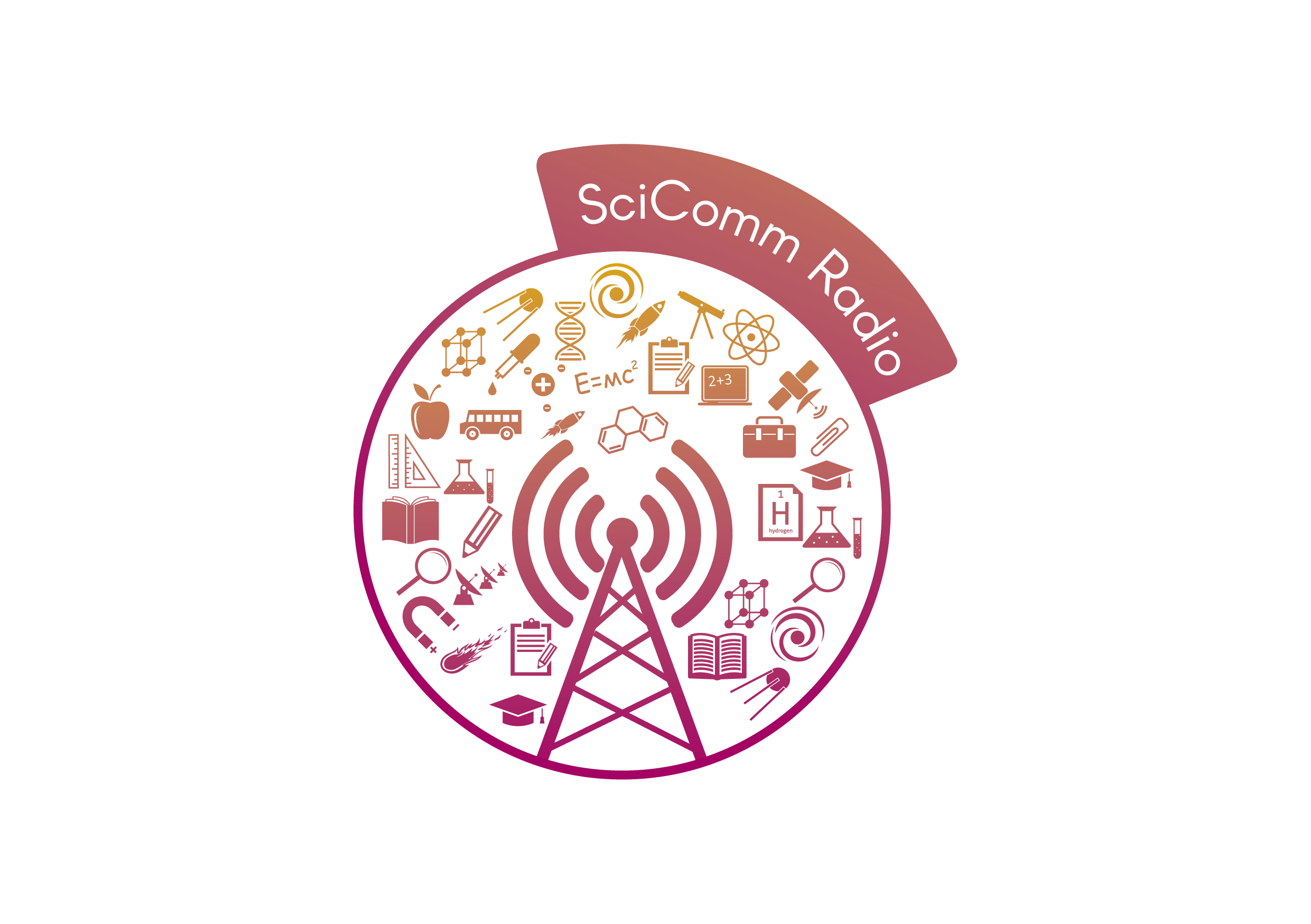
Click Below To Listen To A SciPod Radio Episode
Catalysing Agriculture with Enzymes – Dr Zachary Senwo
Catalysing Agriculture with Enzymes – Dr Zachary Senwo
Original Article Reference
This SciPod is a summary of the paper:
https://doi.org/10.33548/SCIENTIA583
Share Episode
About this episode
Enzymes make life as we know it possible. These active proteins are vital in nutrient cycling, metabolism, and cell functioning. With their diverse range of functions and ubiquity, enzymes could offer techniques to support healthy agricultural ecosystems, and as such, improve sustainability and future food security. Understanding their activities is vital to the organic agriculture revolution. Dr Zachary Senwo and his team at Alabama Agricultural and Mechanical (A&M) University have contributed years of important research to uncover the potential of enzymes towards informing novel agricultural practices.
This work is licensed under a Creative Commons Attribution 4.0 International License. 
What does this mean?
Share: You can copy and redistribute the material in any medium or format
Adapt: You can change, and build upon the material for any purpose, even commercially.
Credit: You must give appropriate credit, provide a link to the license, and indicate if changes were made.
More episodes
Increase the impact of your research
• Good science communication helps people make informed decisions and motivates them to take appropriate and affirmative action.
• Good science communication encourages everyday people to be scientifically literate so that they can analyse the integrity and legitimacy of information.
• Good science communication encourages people into STEM-related fields of study and employment.
• Good public science communication fosters a community around research that includes both members of the public, policymakers and scientists.
• In a recent survey, 75% of people suggested they would prefer to listen to an interesting story than read it.
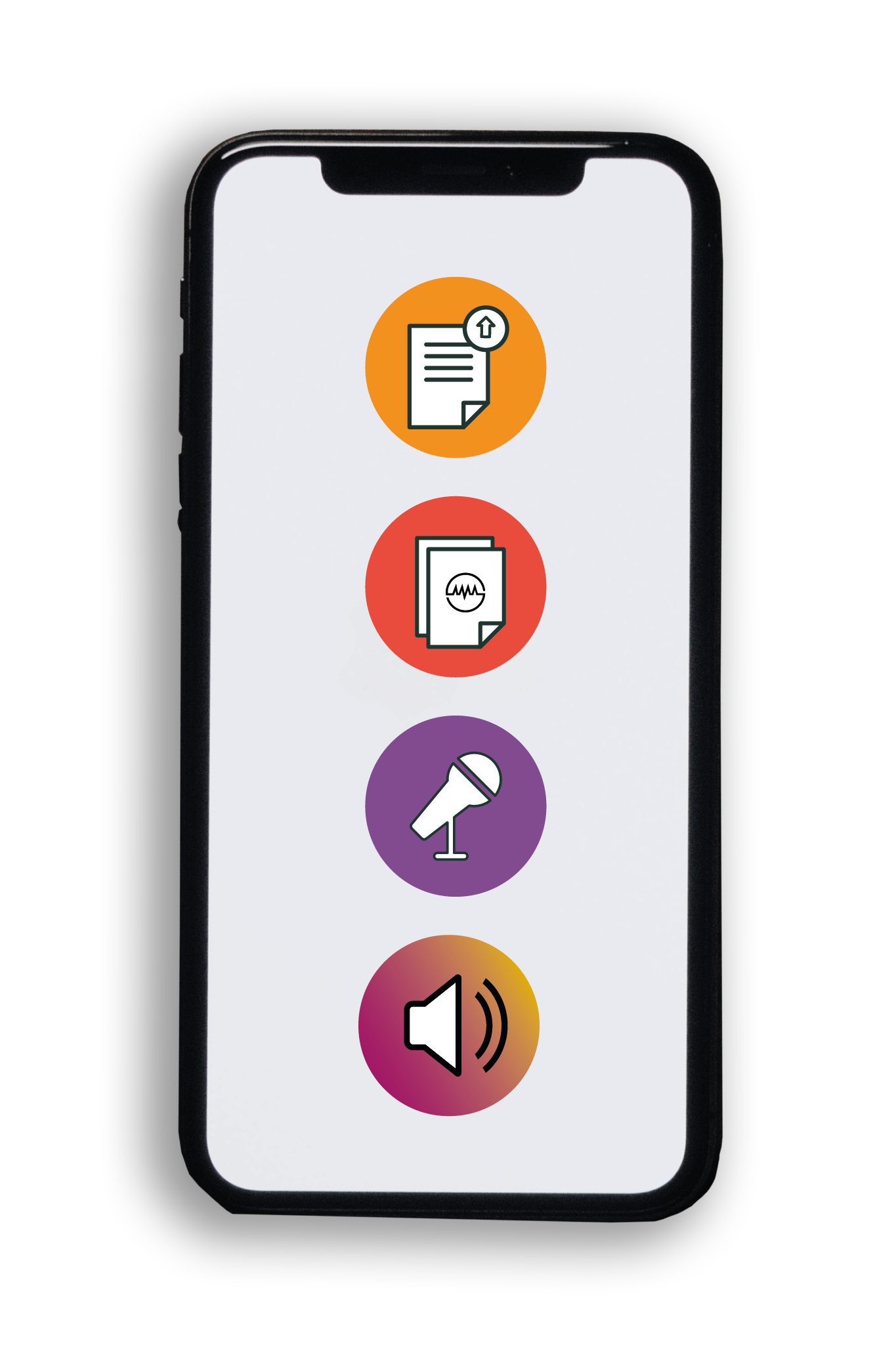
Step 1 Upload your science paper
Step 2 SciPod script written
Step 3 Voice audio recorded
Step 4 SciPod published
Building Community Resiliency through Horticultural Innovation
Building Community Resiliency through Horticultural Innovation
Original Article Reference
This SciPod is a summary of the paper:
https://doi.org/10.33548/SCIENTIA601
Share Episode
About this episode
Food insecurity directly impacts a third of the world’s population and perpetuates a cycle of hunger and malnutrition that is inherited through generations. Previous relief efforts have largely been donor-focused, providing only temporary solutions. To break the cycle of food insecurity, poverty, and hunger, relief efforts must empower communities and facilitate real transformative changes. Professor James Simon of Rutgers University and colleagues have developed a transferable horticulture model that builds upon local ecosystem knowledge and cultural infrastructures while embedding science-driven, market-first, and value chain methodologies. Introduced into several countries in sub-Saharan Africa, the model includes agribusiness and technical skills training to strengthen the participation of farmers and local entrepreneurs, particularly women and youth, in profitable value chains. Using this novel approach, the Rutgers team and their African colleagues have successfully demonstrated how horticulture can contribute to a real reduction in poverty and malnutrition, while fostering job creation, pride and creativity.
This work is licensed under a Creative Commons Attribution 4.0 International License. 
What does this mean?
Share: You can copy and redistribute the material in any medium or format
Adapt: You can change, and build upon the material for any purpose, even commercially.
Credit: You must give appropriate credit, provide a link to the license, and indicate if changes were made.
More episodes
Increase the impact of your research
• Good science communication helps people make informed decisions and motivates them to take appropriate and affirmative action.
• Good science communication encourages everyday people to be scientifically literate so that they can analyse the integrity and legitimacy of information.
• Good science communication encourages people into STEM-related fields of study and employment.
• Good public science communication fosters a community around research that includes both members of the public, policymakers and scientists.
• In a recent survey, 75% of people suggested they would prefer to listen to an interesting story than read it.

Step 1 Upload your science paper
Step 2 SciPod script written
Step 3 Voice audio recorded
Step 4 SciPod published
Agricultural Research Today for a Better Future Tomorrow – Dr Dennis Busch and Dr Andrew Cartmill
Agricultural Research Today for a Better Future Tomorrow – Dr Dennis Busch and Dr Andrew Cartmill
Original Article Reference
This SciPod is a summary of the paper:
https://doi.org/10.33548/SCIENTIA636
Share Episode
About this episode
How to support the expanding human population is one of the greatest societal challenges in the 21st century. To meet the demand for food, fuel and fibre, agricultural productivity will need to dramatically increase. However, to ensure long-term sustainability and resilience, increased productivity must not sacrifice the health of the surrounding ecosystems. Led by Dr Dennis Busch and Dr Andrew Cartmill, the University of Wisconsin-Platteville’s Agro-Ecosystem Research Program draws on the expertise of local and international collaborating scientists and farmers to develop alternative agricultural practices that support sustainable intensification for future food security.
This work is licensed under a Creative Commons Attribution 4.0 International License. 
What does this mean?
Share: You can copy and redistribute the material in any medium or format
Adapt: You can change, and build upon the material for any purpose, even commercially.
Credit: You must give appropriate credit, provide a link to the license, and indicate if changes were made.
More episodes
Increase the impact of your research
• Good science communication helps people make informed decisions and motivates them to take appropriate and affirmative action.
• Good science communication encourages everyday people to be scientifically literate so that they can analyse the integrity and legitimacy of information.
• Good science communication encourages people into STEM-related fields of study and employment.
• Good public science communication fosters a community around research that includes both members of the public, policymakers and scientists.
• In a recent survey, 75% of people suggested they would prefer to listen to an interesting story than read it.

Step 1 Upload your science paper
Step 2 SciPod script written
Step 3 Voice audio recorded
Step 4 SciPod published
A Hydrogel with the Ability to Recover Heart Function
A Hydrogel with the Ability to Recover Heart Function
Original Article Reference
This SciPod is a summary of the paper:
https://doi.org/10.33548/SCIENTIA615
Share Episode
About this episode
The human heart is a muscle, and like all types of muscles, it can be injured. In humans, heart muscle is not able to regenerate after injury, and this can lead to heart disease which develops over time, eventually leading to an untimely death. A team of researchers, Doctor Claudine Bruck (Prolifagen), Professor Edward Morrisey (Department of Medicine and Cell and Developmental Biology) and Professor Jason Burdick (Department of Bioengineering) at the University of Pennsylvania, have collaborated to develop a novel therapy to regenerate damaged heart muscle.
This work is licensed under a Creative Commons Attribution 4.0 International License. 
What does this mean?
Share: You can copy and redistribute the material in any medium or format
Adapt: You can change, and build upon the material for any purpose, even commercially.
Credit: You must give appropriate credit, provide a link to the license, and indicate if changes were made.
More episodes
Increase the impact of your research
• Good science communication helps people make informed decisions and motivates them to take appropriate and affirmative action.
• Good science communication encourages everyday people to be scientifically literate so that they can analyse the integrity and legitimacy of information.
• Good science communication encourages people into STEM-related fields of study and employment.
• Good public science communication fosters a community around research that includes both members of the public, policymakers and scientists.
• In a recent survey, 75% of people suggested they would prefer to listen to an interesting story than read it.

Step 1 Upload your science paper
Step 2 SciPod script written
Step 3 Voice audio recorded
Step 4 SciPod published
A Human-centric Approach to Near-eye Display Engineering – Dr Gordon Wetzstein, Stanford University
A Human-centric Approach to Near-eye Display Engineering – Dr Gordon Wetzstein, Stanford University
Original Article Reference
This SciPod is a summary of the paper:
https://doi.org/10.33548/SCIENTIA645
Share Episode
About this episode
Virtual and augmented reality technologies are now rapidly gaining traction in our society. Yet even as they improve, these devices continue to face major challenges relating to the wide variability of human vision. In their research, Dr Gordon Wetzstein and his colleagues at Stanford University explore innovative new ways to overcome these challenges, through the latest advances in both optics and vision science. In demonstrating ground-breaking innovations to near-eye displays and sensors, the team’s work could soon bring enormous benefits to users spanning a diverse spectrum of visual ability.
This work is licensed under a Creative Commons Attribution 4.0 International License. 
What does this mean?
Share: You can copy and redistribute the material in any medium or format
Adapt: You can change, and build upon the material for any purpose, even commercially.
Credit: You must give appropriate credit, provide a link to the license, and indicate if changes were made.
More episodes
Increase the impact of your research
• Good science communication helps people make informed decisions and motivates them to take appropriate and affirmative action.
• Good science communication encourages everyday people to be scientifically literate so that they can analyse the integrity and legitimacy of information.
• Good science communication encourages people into STEM-related fields of study and employment.
• Good public science communication fosters a community around research that includes both members of the public, policymakers and scientists.
• In a recent survey, 75% of people suggested they would prefer to listen to an interesting story than read it.

Step 1 Upload your science paper
Step 2 SciPod script written
Step 3 Voice audio recorded
Step 4 SciPod published
Examining Behavioural Changes During COVID-19 Lockdowns – Centre for Time Use Research
Examining Behavioural Changes During COVID-19 Lockdowns – Centre for Time Use Research
Share Episode
In Collaboration with



Original Article Reference
This SciPod is a summary of the paper
‘Using time-use diaries to track changing behavior across successive stages of COVID-19 social restrictions’, from Proceedings of the National Academy of Sciences of the United States of America.
https://doi.org/10.1073/pnas.2101724118
About this episode
The COVID-19 pandemic has dramatically changed how people work, travel, spend their free time, and interact with each other. This change was in large part influenced by the restrictions that governments put in place to limit the spread of the virus. Researchers at the Economic and Social Research Council Centre for Time Use Research, part of University College London, have been monitoring how people’s behaviours changed across different stages of the pandemic.
Over the past two years, governments worldwide have been implementing new rules and measures to reduce the spread of COVID-19, in order to limit hospital admissions and prevent death. This included urging people to work from home, close their businesses, wear protective masks, get tested for the virus before travelling, and in particularly critical moments, to only leave the house when strictly necessary.
These new rules have had a serious impact on the lives of most people worldwide, causing them to change their routine interactions and daily activities. While we are all aware of the changes that followed COVID-19 restrictions, so far there have been relatively few studies investigating the detailed behavioural effects of the new regulations as the pandemic played out.
Meet the researchers
Follow us on Twitter:
Prof Oriel Sullivan
Webpage: iris.ucl.ac.uk/iris/browse/profile
E-mail: o.sullivan@ucl.ac.uk
Prof Jonathan Israel Gershuny
Webpage: iris.ucl.ac.uk/iris/browse/profile
E-mail: j.gershuny@ucl.ac.uk
Prof Almudena Sevilla
Webpage: iris.ucl.ac.uk/iris/browse/profile
E-mail: a.sevilla@ucl.ac.uk
Dr Francesca Foliano
Webpage: iris.ucl.ac.uk/iris/browse/profile
E-mail: f.foliano@ucl.ac.uk
Dr Margarita Vega-Rapun
Webpage: iris.ucl.ac.uk/iris/browse/profile
E-mail: m.vega@ucl.ac.uk
Dr Juana Lamote de Grignon Perez
Webpage: timeuse.org/JuanaLamote
E-mail: j.lamote@ucl.ac.uk
Dr Teresa Harms
Dr Pierre Walthery
Webpage: iris.ucl.ac.uk/iris/browse/profile
E-mail: p.walthery@ucl.ac.uk
More episodes you may like
More resources
This work is licensed under a Creative Commons Attribution 4.0 International License. 
What does this mean?
Share: You can copy and redistribute the material in any medium or format
Adapt: You can change, and build upon the material for any purpose, even commercially.
Credit: You must give appropriate credit, provide a link to the license, and indicate if changes were made.
Improving Livestock Through Reproductive Technologies – Dr Curtis R. Youngs
Improving Livestock Through Reproductive Technologies – Dr Curtis R. Youngs
Original Article Reference
This SciPod is a summary of the paper:
https://doi.org/10.33548/SCIENTIA735
Share Episode
About this episode
Reproductive biotechnologies have contributed to many major advances in livestock production, and the proper application of these technologies can lead to livestock with superior genetic traits. This is vitally important given the high rates of malnourishment and poverty in developing countries, where communities could greatly benefit from an increase in meat and dairy products. Collaborating with scientists across the world, Dr Curtis R. Youngs of Iowa State University aims to increase the production of animal-derived foods in developing nations by applying reproductive biotechnologies to improve the efficiency and sustainability of livestock production.
This work is licensed under a Creative Commons Attribution 4.0 International License. 
What does this mean?
Share: You can copy and redistribute the material in any medium or format
Adapt: You can change, and build upon the material for any purpose, even commercially.
Credit: You must give appropriate credit, provide a link to the license, and indicate if changes were made.
More episodes
Increase the impact of your research
• Good science communication helps people make informed decisions and motivates them to take appropriate and affirmative action.
• Good science communication encourages everyday people to be scientifically literate so that they can analyse the integrity and legitimacy of information.
• Good science communication encourages people into STEM-related fields of study and employment.
• Good public science communication fosters a community around research that includes both members of the public, policymakers and scientists.
• In a recent survey, 75% of people suggested they would prefer to listen to an interesting story than read it.

Step 1 Upload your science paper
Step 2 SciPod script written
Step 3 Voice audio recorded
Step 4 SciPod published
Redefining Sustainability Standards to Improve Lives and Livelihoods – Professor Maja Tampe, Esade business school
Redefining Sustainability Standards to Improve Lives and Livelihoods – Professor Maja Tampe, Esade business school
Original Article Reference
This SciPod is a summary of the paper ‘Leveraging the Vertical: The Contested Dynamics of Sustainability Standards and Labour in Global Production Networks’, from the British Journal of Industrial Relations. https://doi.org/10.1111/bjir.12204
Share Episode
About this episode
The International Labour Organisation refers to agriculture as ‘one of the most hazardous of all economic sectors’. Improving labour conditions has been challenging, especially for small farmers. Activists and global buyers have promoted sustainability standards to counteract this problem, for example, Fairtrade certification. Professor Maja Tampe, from the Department of Society, Politics, and Sustainability at Esade business school in Barcelona, investigates the experience of two Ecuadorian cocoa farmer groups that sought access to global markets through certification, but experienced vastly different labour outcomes. This research is a typical example of a qualitative study design in assessing the impacts of voluntary sustainability standards, with a focus on labour outcomes.
This work is licensed under a Creative Commons Attribution 4.0 International License. 
What does this mean?
Share: You can copy and redistribute the material in any medium or format
Adapt: You can change, and build upon the material for any purpose, even commercially.
Credit: You must give appropriate credit, provide a link to the license, and indicate if changes were made.
More episodes
Increase the impact of your research
• Good science communication helps people make informed decisions and motivates them to take appropriate and affirmative action.
• Good science communication encourages everyday people to be scientifically literate so that they can analyse the integrity and legitimacy of information.
• Good science communication encourages people into STEM-related fields of study and employment.
• Good public science communication fosters a community around research that includes both members of the public, policymakers and scientists.
• In a recent survey, 75% of people suggested they would prefer to listen to an interesting story than read it.

Step 1 Upload your science paper
Step 2 SciPod script written
Step 3 Voice audio recorded
Step 4 SciPod published
China’s Belt and Road Initiative: An Epochal Initiative Connecting the World – Professor Xiangming Chen, Trinity College
China’s Belt and Road Initiative: An Epochal Initiative Connecting the World – Professor Xiangming Chen, Trinity College
Original Article Reference
This SciPod is a summary of: https://doi.org/10.33548/SCIENTIA723
Share Episode
About this episode
In 2013, the Chinese Government launched the Belt and Road Initiative (BRI), a massive global infrastructure-building initiative, to increase trade by connecting cities within and across continents. The initiative is redefining globalisation, urbanisation, regionalism, and development. Professor Xiangming Chen has released a policy expo-book (sponsored by the Regional Studies Association) that traces out the changing economic, social, and spatial fortunes of the regions connected to the initiative. In this timely book, the author outlines a modern, fresh and factual account of an outward-looking China ushering in a new era of globalisation through a variety of widespread and far-reaching trans-boundary economic and infrastructure connectivities.
This work is licensed under a Creative Commons Attribution 4.0 International License. 
What does this mean?
Share: You can copy and redistribute the material in any medium or format
Adapt: You can change, and build upon the material for any purpose, even commercially.
Credit: You must give appropriate credit, provide a link to the license, and indicate if changes were made.
More episodes
Increase the impact of your research
• Good science communication helps people make informed decisions and motivates them to take appropriate and affirmative action.
• Good science communication encourages everyday people to be scientifically literate so that they can analyse the integrity and legitimacy of information.
• Good science communication encourages people into STEM-related fields of study and employment.
• Good public science communication fosters a community around research that includes both members of the public, policymakers and scientists.
• In a recent survey, 75% of people suggested they would prefer to listen to an interesting story than read it.

Step 1 Upload your science paper
Step 2 SciPod script written
Step 3 Voice audio recorded
Step 4 SciPod published
Cutting-edge Technology Developing the Hardest Material on Earth – Dr Guodong Zhan, Timothy Eric Moellendick, Dr Duanwei He
Cutting-edge Technology Developing the Hardest Material on Earth – Dr Guodong Zhan, Timothy Eric Moellendick, Dr Duanwei He
Original Article Reference
This SciPod is a summary of: https://doi.org/10.33548/SCIENTIA724
Share Episode
About this episode
Because of its extreme hardness, diamond is used as a cutting material in a multitude of fields, from aerospace engineering to geothermal energy. Using ultra-high pressures and temperatures, scientists have created a new form of diamond, which is now the hardest material known to humankind. Dr Guodong (David) Zhan and Timothy Eric Moellendick at Saudi Aramco, alongside Dr Duanwei He at Sichuan University, are the scientists behind this record-breaking substance, which will serve as an ‘indestructible’ cutting and drilling material.
This work is licensed under a Creative Commons Attribution 4.0 International License. 
What does this mean?
Share: You can copy and redistribute the material in any medium or format
Adapt: You can change, and build upon the material for any purpose, even commercially.
Credit: You must give appropriate credit, provide a link to the license, and indicate if changes were made.
More episodes
Increase the impact of your research
• Good science communication helps people make informed decisions and motivates them to take appropriate and affirmative action.
• Good science communication encourages everyday people to be scientifically literate so that they can analyse the integrity and legitimacy of information.
• Good science communication encourages people into STEM-related fields of study and employment.
• Good public science communication fosters a community around research that includes both members of the public, policymakers and scientists.
• In a recent survey, 75% of people suggested they would prefer to listen to an interesting story than read it.

Step 1 Upload your science paper
Step 2 SciPod script written
Step 3 Voice audio recorded
Step 4 SciPod published
Decision-Making in a Global Crisis – Dr Patrick Waeber and Dr Claude Garcia, Swiss Federal Institute of Technology
Decision-Making in a Global Crisis – Dr Patrick Waeber and Dr Claude Garcia, Swiss Federal Institute of Technology
Original Article Reference
This SciPod is a summary of the paper ‘Choices We Make in Times of Crisis’, from Sustainability. https://doi.org/10.3390/su13063578
Share Episode
About this episode
Despite overwhelming evidence calling for urgent action, climate change continues unabated. Understanding why society’s leaders are failing to adequately respond to the climate emergency is vital if we are to achieve positive changes going forward. However, getting inside the minds of decision-makers is notoriously difficult. Dr Patrick Waeber and Dr Claude Garcia from the Swiss Federal Institute of Technology, together with colleagues from Canada, the US, Brazil, and Madagascar, have developed advanced theoretical models to help us untangle the complexities of climate change responses. Their framework could help foster the constructive dialogue needed for transformative change.
This work is licensed under a Creative Commons Attribution 4.0 International License. 
What does this mean?
Share: You can copy and redistribute the material in any medium or format
Adapt: You can change, and build upon the material for any purpose, even commercially.
Credit: You must give appropriate credit, provide a link to the license, and indicate if changes were made.
More episodes
Increase the impact of your research
• Good science communication helps people make informed decisions and motivates them to take appropriate and affirmative action.
• Good science communication encourages everyday people to be scientifically literate so that they can analyse the integrity and legitimacy of information.
• Good science communication encourages people into STEM-related fields of study and employment.
• Good public science communication fosters a community around research that includes both members of the public, policymakers and scientists.
• In a recent survey, 75% of people suggested they would prefer to listen to an interesting story than read it.

Step 1 Upload your science paper
Step 2 SciPod script written
Step 3 Voice audio recorded
Step 4 SciPod published
The Influence of Stress on the Development and Recovery of Alcohol Use Disorders – Dr Sara Blaine, Auburn University
The Influence of Stress on the Development and Recovery of Alcohol Use Disorders – Dr Sara Blaine, Auburn University
Original Article Reference
This SciPod is a summary of https://doi.org/10.33548/SCIENTIA625
Share Episode
About this episode
The prevalence of Alcohol Use Disorders represents a serious concern given the deleterious impacts observed on individuals, their families, and society more widely. A better understanding of the factors associated with the development and recovery of Alcohol Use Disorders is essential to the development of more effective treatments. This is the focus of research by Dr Sara Blaine from Auburn University, USA.
This work is licensed under a Creative Commons Attribution 4.0 International License. 
What does this mean?
Share: You can copy and redistribute the material in any medium or format
Adapt: You can change, and build upon the material for any purpose, even commercially.
Credit: You must give appropriate credit, provide a link to the license, and indicate if changes were made.
More episodes
Increase the impact of your research
• Good science communication helps people make informed decisions and motivates them to take appropriate and affirmative action.
• Good science communication encourages everyday people to be scientifically literate so that they can analyse the integrity and legitimacy of information.
• Good science communication encourages people into STEM-related fields of study and employment.
• Good public science communication fosters a community around research that includes both members of the public, policymakers and scientists.
• In a recent survey, 75% of people suggested they would prefer to listen to an interesting story than read it.

Step 1 Upload your science paper
Step 2 SciPod script written
Step 3 Voice audio recorded
Step 4 SciPod published
Iodine Nutrition in Pregnancy and Breast Feeding to Prevent Iodine Deficiency Disorders – Professors Creswell Eastman, Mu Li and Gary Ma
Iodine Nutrition in Pregnancy and Breast Feeding to Prevent Iodine Deficiency Disorders – Professors Creswell Eastman, Mu Li and Gary Ma
Original Article Reference
This SciPod is a summary of the open access review paper ‘Optimal assessment and quantification of iodine nutrition in pregnancy and lactation: laboratory and clinical methods, controversies and future
directions’ from the journal Nutrients. https://doi.org/10.3390/nu11102378
Share Episode
About this episode
Severe iodine deficiency disorders (IDDs) caused by lack of iodine during pregnancy and early life can result in irreversible brain damage but are avoidable. Professor Creswell Eastman at the University of Sydney in Australia and his colleagues Professors Mu Li and Gary Ma have contributed significantly to the prevention of IDDs arising from severe iodine deficiency in the developing world and is now concentrating on the effects of mild to moderate iodine deficiency globally.
This work is licensed under a Creative Commons Attribution 4.0 International License. 
What does this mean?
Share: You can copy and redistribute the material in any medium or format
Adapt: You can change, and build upon the material for any purpose, even commercially.
Credit: You must give appropriate credit, provide a link to the license, and indicate if changes were made.
More episodes
Increase the impact of your research
• Good science communication helps people make informed decisions and motivates them to take appropriate and affirmative action.
• Good science communication encourages everyday people to be scientifically literate so that they can analyse the integrity and legitimacy of information.
• Good science communication encourages people into STEM-related fields of study and employment.
• Good public science communication fosters a community around research that includes both members of the public, policymakers and scientists.
• In a recent survey, 75% of people suggested they would prefer to listen to an interesting story than read it.

Step 1 Upload your science paper
Step 2 SciPod script written
Step 3 Voice audio recorded
Step 4 SciPod published
Improving The Diagnosis And Treatment Of Neurological Diseases – Dr Arun Swaminathan, University Of Nebraska Medical Center
Improving The Diagnosis And Treatment Of Neurological Diseases – Dr Arun Swaminathan, University Of Nebraska Medical Center
Original Article Reference
This SciPod is a summary of
https://doi.org/10.33548/SCIENTIA608
Share Episode
About this episode
Medical conditions that affect the brain can have severe impacts on people’s lives. Many of these conditions can be difficult to treat, including epilepsy which affects the brain to cause seizures and the common form of dementia known as Alzheimer’s disease. Dr Arun Swaminathan at the University of Nebraska Medical Center specialises in the treatment of epilepsy. He also collaborates with fellow researchers to explore treatment options for Alzheimer’s disease.
This work is licensed under a Creative Commons Attribution 4.0 International License. 
What does this mean?
Share: You can copy and redistribute the material in any medium or format
Adapt: You can change, and build upon the material for any purpose, even commercially.
Credit: You must give appropriate credit, provide a link to the license, and indicate if changes were made.
More episodes
Increase the impact of your research
• Good science communication encourages everyday people to be scientifically literate so that they can analyse the integrity and legitimacy of information.
• Good science communication encourages people into STEM-related fields of study and employment.
• Good public science communication fosters a community around research that includes both members of the public, policymakers and scientists.
• In a recent survey, 75% of people suggested they would prefer to listen to an interesting story than read it.

Step 2 SciPod script written
Step 3 Voice audio recorded
Step 4 SciPod published
Exploring The Vibrant Dynamics Of Near – Earth Space – Dr Gerhard Haerendel, Max Planck Institute For Extraterrestrial Physics
Exploring The Vibrant Dynamics Of Near – Earth Space – Dr Gerhard Haerendel, Max Planck Institute For Extraterrestrial Physics
Original Article Reference
This SciPod is a summary of
https://doi.org/10.33548/SCIENTIA593
Share Episode
About this episode
The region of space in which Earth’s magnetic field interacts with flowing charged particles is home to a rich array of physical processes – but studying them is no easy task. Through a career spanning over 50 years, Dr Gerhard Haerendel at the Max Planck Institute for extraterrestrial physics has carried out world-leading research into these processes. His discoveries have now led to ground-breaking insights in the field of plasma physics – including explanations of striking arcs in the aurora, the discovery of characteristic prominences on the Sun’s surface, and analysis of artificial comets seeded directly into space.
This work is licensed under a Creative Commons Attribution 4.0 International License. 
What does this mean?
Share: You can copy and redistribute the material in any medium or format
Adapt: You can change, and build upon the material for any purpose, even commercially.
Credit: You must give appropriate credit, provide a link to the license, and indicate if changes were made.
More episodes
Increase the impact of your research
• Good science communication encourages everyday people to be scientifically literate so that they can analyse the integrity and legitimacy of information.
• Good science communication encourages people into STEM-related fields of study and employment.
• Good public science communication fosters a community around research that includes both members of the public, policymakers and scientists.
• In a recent survey, 75% of people suggested they would prefer to listen to an interesting story than read it.

Step 2 SciPod script written
Step 3 Voice audio recorded
Step 4 SciPod published
Naturally Occurring Diseases In Dogs And Cats Help To Develop Treatments For Inherited Neurological Disorders – Dr Charles Vite, University Of Pennsylvania
Naturally Occurring Diseases In Dogs And Cats Help To Develop Treatments For Inherited Neurological Disorders – Dr Charles Vite, University Of Pennsylvania
Original Article Reference
This SciPod is a summary of
https://doi.org/10.33548/SCIENTIA614
Share Episode
About this episode
Many inherited neurological diseases are rare but can have severe outcomes, frequently resulting in disability and even death for children. New treatment options are essential to prevent suffering and decrease mortality, but to find such treatments, these diseases need to be more closely studied. Dr Charles Vite and his team at the School of Veterinary Medicine, University of Pennsylvania, are committed to achieving these goals. By utilising animal models and unique markers for inherited neurological disease, they have already delivered promising results supporting the development of new treatment options.
This work is licensed under a Creative Commons Attribution 4.0 International License. 
What does this mean?
Share: You can copy and redistribute the material in any medium or format
Adapt: You can change, and build upon the material for any purpose, even commercially.
Credit: You must give appropriate credit, provide a link to the license, and indicate if changes were made.
More episodes
Increase the impact of your research
• Good science communication encourages everyday people to be scientifically literate so that they can analyse the integrity and legitimacy of information.
• Good science communication encourages people into STEM-related fields of study and employment.
• Good public science communication fosters a community around research that includes both members of the public, policymakers and scientists.
• In a recent survey, 75% of people suggested they would prefer to listen to an interesting story than read it.

Step 2 SciPod script written
Step 3 Voice audio recorded
Step 4 SciPod published
Using Plants As A Source Of Anti – Cancer Compounds For Undergraduate Research Experiences – Dr Patrick Still, California State University, Dominguez Hills
Using Plants As A Source Of Anti – Cancer Compounds For Undergraduate Research Experiences – Dr Patrick Still, California State University, Dominguez Hills
Original Article Reference
This SciPod is a summary of
https://doi.org/10.33548/SCIENTIA569
Share Episode
About this episode
Cancer, in all its forms, is one of the major causes of death across the world and we are in urgent need of more effective interventions for this global killer. Drugs used to treat diseases like cancer can be either synthetic in origin, semi-synthetic derivatives of natural products, or unmodified natural products. Dr Patrick Still and his team at California State University, Dominguez Hills (CSUDH), conduct research to identify and biologically screen anti-cancer compounds derived specifically from plant materials. Studies involving structure elucidation and biological testing of compounds from plants have provided undergraduate research experiences for students across chemical and biological sciences majors on the CSUDH campus.
This work is licensed under a Creative Commons Attribution 4.0 International License. 
What does this mean?
Share: You can copy and redistribute the material in any medium or format
Adapt: You can change, and build upon the material for any purpose, even commercially.
Credit: You must give appropriate credit, provide a link to the license, and indicate if changes were made.
More episodes
Increase the impact of your research
• Good science communication encourages everyday people to be scientifically literate so that they can analyse the integrity and legitimacy of information.
• Good science communication encourages people into STEM-related fields of study and employment.
• Good public science communication fosters a community around research that includes both members of the public, policymakers and scientists.
• In a recent survey, 75% of people suggested they would prefer to listen to an interesting story than read it.

Step 2 SciPod script written
Step 3 Voice audio recorded
Step 4 SciPod published
Cultivating Skilled Manufacturers In Rural Wisconsin
Cultivating Skilled Manufacturers In Rural Wisconsin
Original Article Reference
This SciPod is a summary of
https://doi.org/10.33548/SCIENTIA570
Share Episode
About this episode
The manufacturing industry has long been central to the livelihoods of people in rural Wisconsin. Increasingly, however, the speed of change and innovation that many of these businesses need to incorporate to stay competitive are profound. This change, known as ‘Industry 4.0’, is being applied to businesses both large and small. In Western Wisconsin, the Trempealeau Valley Cooperative 2.0, Western Technical College and Ashley Furniture Industries are collaborating to develop a new educational model that will equip a new generation of students with the necessary skills to retain a cutting-edge manufacturing industry in the region.
This work is licensed under a Creative Commons Attribution 4.0 International License. 
What does this mean?
Share: You can copy and redistribute the material in any medium or format
Adapt: You can change, and build upon the material for any purpose, even commercially.
Credit: You must give appropriate credit, provide a link to the license, and indicate if changes were made.
More episodes
Increase the impact of your research
• Good science communication encourages everyday people to be scientifically literate so that they can analyse the integrity and legitimacy of information.
• Good science communication encourages people into STEM-related fields of study and employment.
• Good public science communication fosters a community around research that includes both members of the public, policymakers and scientists.
• In a recent survey, 75% of people suggested they would prefer to listen to an interesting story than read it.

Step 2 SciPod script written
Step 3 Voice audio recorded
Step 4 SciPod published
Professor Masahito Oh-e – Intriguing Molecular Discoveries in Display Materials
Professor Masahito Oh-e – Intriguing Molecular Discoveries in Display Materials
Original Article Reference
This SciPod is a summary of
https://doi.org/10.33548/SCIENTIA690
Share Episode
About this episode
It is a widely-accepted scientific fact that the motions of molecules increase as their temperature rises. However, Dr Masahito Oh-e at the National Tsing Hua University in Taiwan has recently made a counterintuitive discovery in an organic semiconductor called ‘CADN’. Within a thin film of this material, his team has found that the motion of one part of the CADN molecule increases, while another part becomes more ordered as the temperature increases and approaches the material’s phase transition. This research is scientifically intriguing, but also has profound implications for improving display technologies based on organic semiconductor materials.
This work is licensed under a Creative Commons Attribution 4.0 International License. 
What does this mean?
Share: You can copy and redistribute the material in any medium or format
Adapt: You can change, and build upon the material for any purpose, even commercially.
Credit: You must give appropriate credit, provide a link to the license, and indicate if changes were made.
More episodes
Increase the impact of your research
• Good science communication encourages everyday people to be scientifically literate so that they can analyse the integrity and legitimacy of information.
• Good science communication encourages people into STEM-related fields of study and employment.
• Good public science communication fosters a community around research that includes both members of the public, policymakers and scientists.
• In a recent survey, 75% of people suggested they would prefer to listen to an interesting story than read it.

Step 2 SciPod script written
Step 3 Voice audio recorded
Step 4 SciPod published
Rethinking Strategies For Increasing Salmon Survival – Dr David Welch, Kintama Research Services
Rethinking Strategies For Increasing Salmon Survival – Dr David Welch, Kintama Research Services
Original Article Reference
This SciPod is a summary of
https://doi.org/10.33548/SCIENTIA574
Share Episode
About this episode
It’s a long-held belief that a series of dams in the Snake River in Northwest USA constructed nearly 50 years ago has led to serious declines in Chinook salmon populations. However, new research by Dr David Welch and his team from Kintama Research Services Ltd shows that survival of Chinook salmon measured by a wide range of government agencies has fallen by 65% along the whole North American West Coast over this period. These results have significant implications for informing conservation strategies to protect and restore this important species.
This work is licensed under a Creative Commons Attribution 4.0 International License. 
What does this mean?
Share: You can copy and redistribute the material in any medium or format
Adapt: You can change, and build upon the material for any purpose, even commercially.
Credit: You must give appropriate credit, provide a link to the license, and indicate if changes were made.
More episodes
Increase the impact of your research
• Good science communication encourages everyday people to be scientifically literate so that they can analyse the integrity and legitimacy of information.
• Good science communication encourages people into STEM-related fields of study and employment.
• Good public science communication fosters a community around research that includes both members of the public, policymakers and scientists.
• In a recent survey, 75% of people suggested they would prefer to listen to an interesting story than read it.

Step 2 SciPod script written
Step 3 Voice audio recorded
Step 4 SciPod published
Empowering People Living With Human Immunodeficiency Virus And Other Patients Using MHealth – Dr Bertrand Lebouché, McGill University
Empowering People Living With Human Immunodeficiency Virus And Other Patients Using MHealth – Dr Bertrand Lebouché, McGill University
Original Article Reference
This SciPod is a summary of
https://doi.org/10.33548/SCIENTIA557
Share Episode
About this episode
The healthcare system can sometimes be puzzling, and even unwelcoming, for people with chronic, complex, or multiple conditions. Many must spend long hours in waiting rooms, try to make sense of complicated scientific information, and book and attend multiple clinic appointments with clinicians from different specialities. Remaining up to date on patients’ health data can be a challenge for healthcare professionals as well. Here, we present the critical work of Dr Bertrand Lebouché and his team at the McGill University Health Centre, who are seeking solutions in smartphone-based applications relevant to both patients and healthcare professionals.
This work is licensed under a Creative Commons Attribution 4.0 International License. 
What does this mean?
Share: You can copy and redistribute the material in any medium or format
Adapt: You can change, and build upon the material for any purpose, even commercially.
Credit: You must give appropriate credit, provide a link to the license, and indicate if changes were made.
More episodes
Increase the impact of your research
• Good science communication encourages everyday people to be scientifically literate so that they can analyse the integrity and legitimacy of information.
• Good science communication encourages people into STEM-related fields of study and employment.
• Good public science communication fosters a community around research that includes both members of the public, policymakers and scientists.
• In a recent survey, 75% of people suggested they would prefer to listen to an interesting story than read it.

Step 2 SciPod script written
Step 3 Voice audio recorded
Step 4 SciPod published
From Nerve Development To Vision A Bumpy Ride – Dr Mary Whitman, Boston Children’s Hospital
From Nerve Development To Vision A Bumpy Ride – Dr Mary Whitman, Boston Children’s Hospital
Original Article Reference
This SciPod is a summary of
https://doi.org/10.33548/SCIENTIA559
Share Episode
About this episode
The eye movement disorders strabismus (characterised by eye misalignment) and nystagmus (characterised by involuntary oscillation of the eyes) together affect up to 5% of the population and have a detrimental impact on vision. These disorders also impact on facial appearance and social interaction, which may, in turn, lead to psychological difficulties. Dr Mary Whitman, at the Boston Children’s Hospital, USA, is working to understand the genetic causes and neurological mechanisms underlying eye movement disorders to improve treatment and, ultimately, prevent their onset.
This work is licensed under a Creative Commons Attribution 4.0 International License. 
What does this mean?
Share: You can copy and redistribute the material in any medium or format
Adapt: You can change, and build upon the material for any purpose, even commercially.
Credit: You must give appropriate credit, provide a link to the license, and indicate if changes were made.
More episodes
Increase the impact of your research
• Good science communication encourages everyday people to be scientifically literate so that they can analyse the integrity and legitimacy of information.
• Good science communication encourages people into STEM-related fields of study and employment.
• Good public science communication fosters a community around research that includes both members of the public, policymakers and scientists.
• In a recent survey, 75% of people suggested they would prefer to listen to an interesting story than read it.

Step 2 SciPod script written
Step 3 Voice audio recorded
Step 4 SciPod published
Neurotransmitter Switching A New Form Of Brain Plasticity – Dr Nicholas Spitzer
Neurotransmitter Switching A New Form Of Brain Plasticity – Dr Nicholas Spitzer
Original Article Reference
This SciPod is a summary of
https://doi.org/10.33548/SCIENTIA556
Share Episode
About this episode
The discovery that the brain can change and reorganise itself revolutionised our understanding of neuroscience. Termed neuroplasticity, the field has seen an explosion of interest. An exciting form of plasticity has now been identified, in which neurons change their chemical communicator in response to environmental stimuli. Dr Nicholas Spitzer of the University of California, San Diego and his colleagues are looking to understand what causes this, what the effects are, and whether we can harness this exciting new facet of neurobiology to develop novel therapeutics for neurologic and psychiatric disorders.
This work is licensed under a Creative Commons Attribution 4.0 International License. 
What does this mean?
Share: You can copy and redistribute the material in any medium or format
Adapt: You can change, and build upon the material for any purpose, even commercially.
Credit: You must give appropriate credit, provide a link to the license, and indicate if changes were made.
More episodes
Increase the impact of your research
• Good science communication encourages everyday people to be scientifically literate so that they can analyse the integrity and legitimacy of information.
• Good science communication encourages people into STEM-related fields of study and employment.
• Good public science communication fosters a community around research that includes both members of the public, policymakers and scientists.
• In a recent survey, 75% of people suggested they would prefer to listen to an interesting story than read it.

Step 2 SciPod script written
Step 3 Voice audio recorded
Step 4 SciPod published
Microbes Agriculture’s Microscopic Helpers – Dr Zachary Senwo
Microbes Agriculture’s Microscopic Helpers – Dr Zachary Senwo
Original Article Reference
This SciPod is a summary of
https://doi.org/10.33548/SCIENTIA562
Share Episode
About this episode
Climate change and environmental degradation are increasingly threatening our ability to feed a burgeoning human population. Switching to agricultural practices that support beneficial soil microbes, and thus healthy soils, may help farmers achieve the yields required for continued food security. Dr Zachary Senwo from the College of Agriculture, Life and Natural Sciences at Alabama A&M University has spent over two decades exploring how agricultural management practices impact soil health. In an extensive new project, his team is investigating soil nitrogen cycling and the role of microbes in soil health.
This work is licensed under a Creative Commons Attribution 4.0 International License. 
What does this mean?
Share: You can copy and redistribute the material in any medium or format
Adapt: You can change, and build upon the material for any purpose, even commercially.
Credit: You must give appropriate credit, provide a link to the license, and indicate if changes were made.
More episodes
Increase the impact of your research
• Good science communication encourages everyday people to be scientifically literate so that they can analyse the integrity and legitimacy of information.
• Good science communication encourages people into STEM-related fields of study and employment.
• Good public science communication fosters a community around research that includes both members of the public, policymakers and scientists.
• In a recent survey, 75% of people suggested they would prefer to listen to an interesting story than read it.

Step 2 SciPod script written
Step 3 Voice audio recorded
Step 4 SciPod published
Comparative Optimism about Infection and Recovery From COVID-19; Implications for Adherence with Lockdown Advice – Dr Sasha Scambler and Dr Koula Asimakopoulou, King’s College London
Comparative Optimism about Infection and Recovery From COVID-19; Implications for Adherence with Lockdown Advice – Dr Sasha Scambler and Dr Koula Asimakopoulou, King’s College London
In Collaboration With
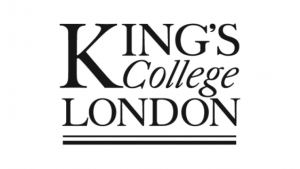
Original Article Reference
This SciPod is a summary of the open access paper ‘Comparative optimism about infection and
recovery from COVID-19; Implications for adherence with lockdown advice’, published by the journal
Health Expectations. https://doi.org/10.1111/hex.13134
Share Episode
About this episode
Comparative optimism is the belief that negative events are more likely to happen to others than oneself. Dr Sasha Scambler and Dr Koula Asimakopoulou from King’s College London and their colleagues have recently conducted research exploring how the perceived controllability of events relating to COVID-19 in a large sample of UK-based participants impacts upon their health expectations and potential behaviour during the pandemic.
Meet the researchers
Dr Koula Asimakopoulou
Reader in Health Psychology
Webpage: www.kcl.ac.uk/people/koula-asimakopoulou
E-mail: koula.asimakopoulou@kcl.ac.uk
Dr Sasha Scambler
Reader in Medical Sociology
Webpage: www.kcl.ac.uk/people/sasha-scambler
E-mail: sasha.scambler@kcl.ac.uk
More episodes from King’s College London
More resources from Kings’s
This work is licensed under a Creative Commons Attribution 4.0 International License. 
What does this mean?
Share: You can copy and redistribute the material in any medium or format
Adapt: You can change, and build upon the material for any purpose, even commercially.
Credit: You must give appropriate credit, provide a link to the license, and indicate if changes were made.
Exploring How Technology Enhances Inclusion and Participation in Humanities Research – Dr Anna Khlusova, Kings College London
Exploring How Technology Enhances Inclusion and Participation in Humanities Research – Dr Anna Khlusova, Kings College London
In Collaboration with

Original Article Reference
This SciPod is a summary of the paper
‘Public Engagement in the Digital Environment: Opportunities and Challenges for Arts and Humanities Researchers’. Available at www.kcl.ac.uk/research/public-engagement-in-the-digital-environment
You can also visit the AHRI website for more information on work that they are doing: www.kcl.ac.uk/ahri
Share Episode
About this episode
Digital technology can open up interesting possibilities for research, by enabling new public engagement initiatives and allowing researchers to easily reach out to countless individuals worldwide. Dr Anna Khlusova at Kings College London recently carried out a study commissioned by the Arts and Humanities Research Institute, investigating the impact of digitalisation on public engagement in humanities research. As part of her study, she analysed data gathered during three online initiatives, which were designed to promote public participation in research.
Meet the researcher
Dr Anna Khlusova
Lecturer in Culture, Media & Creative Industries Education
Contact details
More episodes from King’s College London
More resources from Kings’s
This work is licensed under a Creative Commons Attribution 4.0 International License. 
What does this mean?
Share: You can copy and redistribute the material in any medium or format
Adapt: You can change, and build upon the material for any purpose, even commercially.
Credit: You must give appropriate credit, provide a link to the license, and indicate if changes were made.
Social and Political Determinants of Health in the Occupied Palestinian Territory During the COVID-19 Pandemic
Social and Political Determinants of Health in the Occupied Palestinian Territory During the COVID-19 Pandemic
In Collaboration with

Original Article Reference
This SciPod is a summary of the paper
‘Social and political determinants of health in the occupied Palestinian territory (oPt) during the COVID-19 pandemic: who is responsible?’, from the journal BMJ Public Health. http://dx.doi.org/10.1136/bmjgh-2020-003683
Share Episode
About this episode
The occupied Palestinian territory has faced specific challenges arising from the COVID-19 pandemic due to the existing political, economic and social instability. Dr Weeam Hammoudeh and Professor Rita Giacaman from Birzeit University, and Dr Hanna Kienzler and Ms Kristen Meagher from King’s College London, have recently examined the impact of the COVID-19 pandemic on this complex situation. They propose that the pandemic should now be taken as an opportunity to work towards securing justice and freedom for Palestinians.
Meet the researchers
Dr Weeam Hammoudeh
Webpage: icph.birzeit.edu/about/faculty-staff/weeam-hammoudeh
E-mail: whammoudeh@birzeit.edu
Prof Rita Giacaman
Webpage: icph.birzeit.edu/about/faculty-staff/rita-giacaman
E-mail: rita@birzeit.edu
Dr Hanna Kienzler
More episodes from King’s College London
More resources from Kings’s
This work is licensed under a Creative Commons Attribution 4.0 International License. 
What does this mean?
Share: You can copy and redistribute the material in any medium or format
Adapt: You can change, and build upon the material for any purpose, even commercially.
Credit: You must give appropriate credit, provide a link to the license, and indicate if changes were made.
Spinal Cord Injury and Recovery in Rats Informing Human Rehabilitation – Professor David Magnuson, University of Louisville
Spinal Cord Injury and Recovery in Rats Informing Human Rehabilitation – Professor David Magnuson, University of Louisville
Original Article Reference
This SciPod is a summary of
doi.org/10.33548/SCIENTIA683
Share Episode
About this episode
Professor David Magnuson, at the University of Louisville, Kentucky, describes himself as ‘a CPG guy’ and occasionally, more informally as ‘a rat guy!’ His work on the function of the central pattern generator (CPG) in the rat spinal cord following spinal cord injury, has produced both surprising and thought-provoking results. This research may ultimately challenge the established clinical beliefs and practices around the ways to best rehabilitate human patients with severe spinal cord injury.
This work is licensed under a Creative Commons Attribution 4.0 International License. 
What does this mean?
Share: You can copy and redistribute the material in any medium or format
Adapt: You can change, and build upon the material for any purpose, even commercially.
Credit: You must give appropriate credit, provide a link to the license, and indicate if changes were made.
More episodes
Increase the impact of your research
• Good science communication encourages everyday people to be scientifically literate so that they can analyse the integrity and legitimacy of information.
• Good science communication encourages people into STEM-related fields of study and employment.
• Good public science communication fosters a community around research that includes both members of the public, policymakers and scientists.
• In a recent survey, 75% of people suggested they would prefer to listen to an interesting story than read it.

Step 2 SciPod script written
Step 3 Voice audio recorded
Step 4 SciPod published
The Role of Notch Signalling within the Molecular Clock in the Early Development of the Skeleton – Professor Kim Dale, University of Dundee
The Role of Notch Signalling within the Molecular Clock in the Early Development of the Skeleton – Professor Kim Dale, University of Dundee
Original Article Reference
This SciPod is a summary of
https://doi.org/10.33548/SCIENTIA550
Share Episode
About this episode
Cells possess the ability to interact with one another through complex signalling pathways. Different signals regulate how cells differentiate, undergoing modifications that ultimately allow them to adopt different cell fates and perform specific functions. The laboratory of Professor Kim Dale from the University of Dundee, Scotland, has made seminal contributions to our understanding of how the Notch signalling pathway controls the formation of tissues and organs in the earliest stages of development. Their important research has unveiled new insights into the molecular basis of Notch signalling in the context of normal development which will further our understanding of the molecular basis of developmental disorders and a multitude of diseases correlated with aberrant Notch signalling.
This work is licensed under a Creative Commons Attribution 4.0 International License. 
What does this mean?
Share: You can copy and redistribute the material in any medium or format
Adapt: You can change, and build upon the material for any purpose, even commercially.
Credit: You must give appropriate credit, provide a link to the license, and indicate if changes were made.
More episodes
Increase the impact of your research
• Good science communication encourages everyday people to be scientifically literate so that they can analyse the integrity and legitimacy of information.
• Good science communication encourages people into STEM-related fields of study and employment.
• Good public science communication fosters a community around research that includes both members of the public, policymakers and scientists.
• In a recent survey, 75% of people suggested they would prefer to listen to an interesting story than read it.

Step 2 SciPod script written
Step 3 Voice audio recorded
Step 4 SciPod published
New Sorghum Reference Genome Highlights Genetics Underlying Sweet Varieties – Dr Elizabeth A. Cooper, University of North Carolina Charlotte
New Sorghum Reference Genome Highlights Genetics Underlying Sweet Varieties – Dr Elizabeth A. Cooper, University of North Carolina Charlotte
Original Article Reference
This SciPod is a summary of
https://doi.org/10.33548/SCIENTIA548
Share Episode
About this episode
Sorghum is a staple crop in many regions of the world. As such, this versatile plant has been selectively bred into a number of cultivars, including sweet varieties predominantly used for forage, silage, sweet syrup and bioenergy production. Dr Elizabeth A. Cooper and her team at the University of North Carolina at Charlotte generated a full reference genome for the sweet sorghum cultivar ‘Rio’ with the aim of understanding the genetics underlying the differences between grain and sweet cultivars. Their research could provide a vital tool for biologists and breeders to improve sweet sorghum lineages.
This work is licensed under a Creative Commons Attribution 4.0 International License. 
What does this mean?
Share: You can copy and redistribute the material in any medium or format
Adapt: You can change, and build upon the material for any purpose, even commercially.
Credit: You must give appropriate credit, provide a link to the license, and indicate if changes were made.
More episodes
Increase the impact of your research
• Good science communication helps people make informed decisions and motivates them to take appropriate and affirmative action.
• Good science communication encourages everyday people to be scientifically literate so that they can analyse the integrity and legitimacy of information.
• Good science communication encourages people into STEM-related fields of study and employment.
• Good public science communication fosters a community around research that includes both members of the public, policymakers and scientists.
• In a recent survey, 75% of people suggested they would prefer to listen to an interesting story than read it.

Step 1 Upload your science paper
Step 2 SciPod script written
Step 3 Voice audio recorded
Step 4 SciPod published

